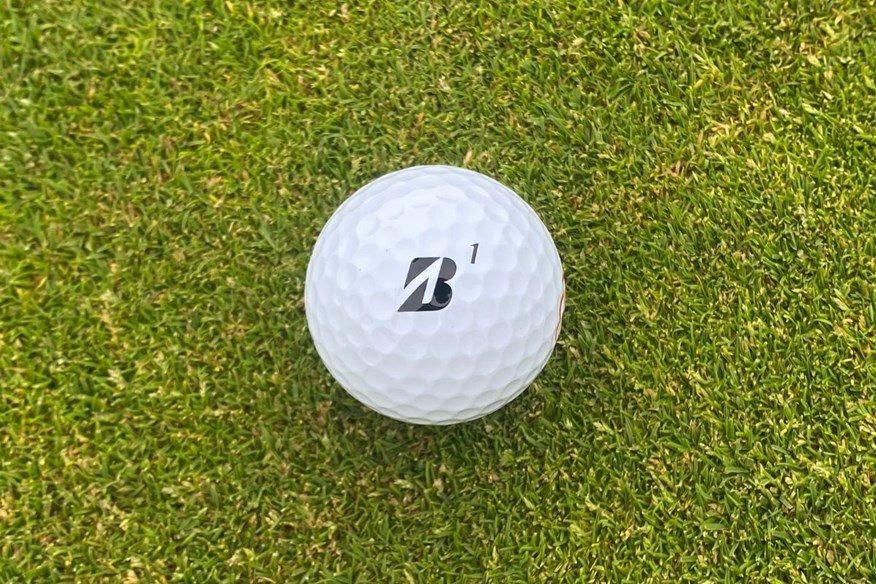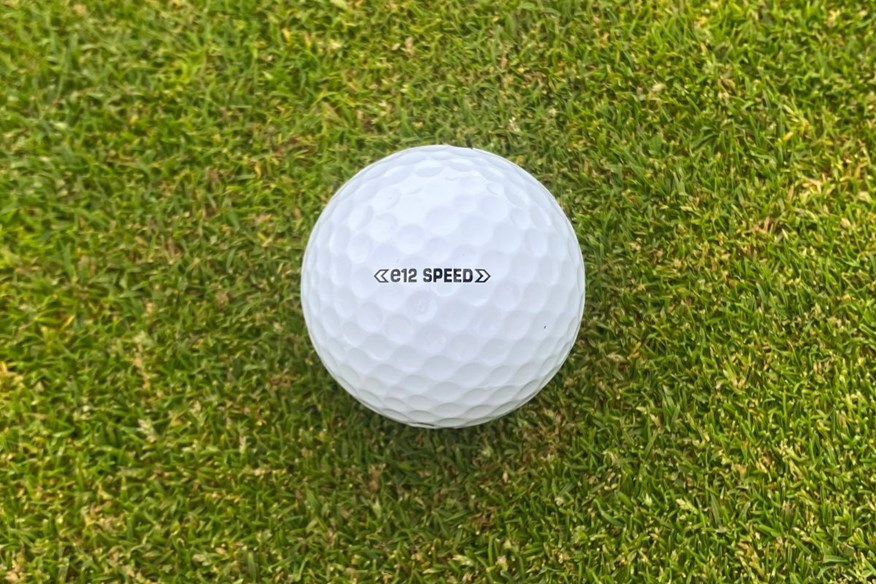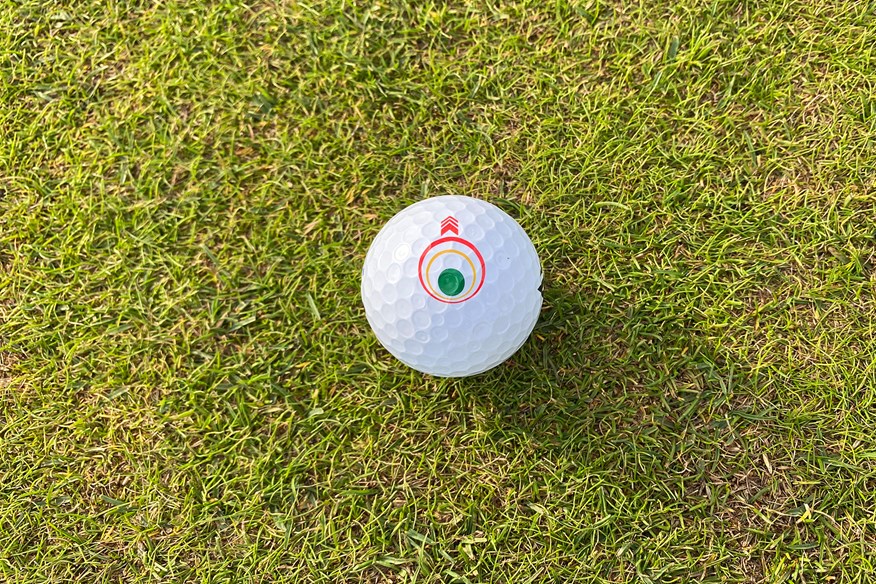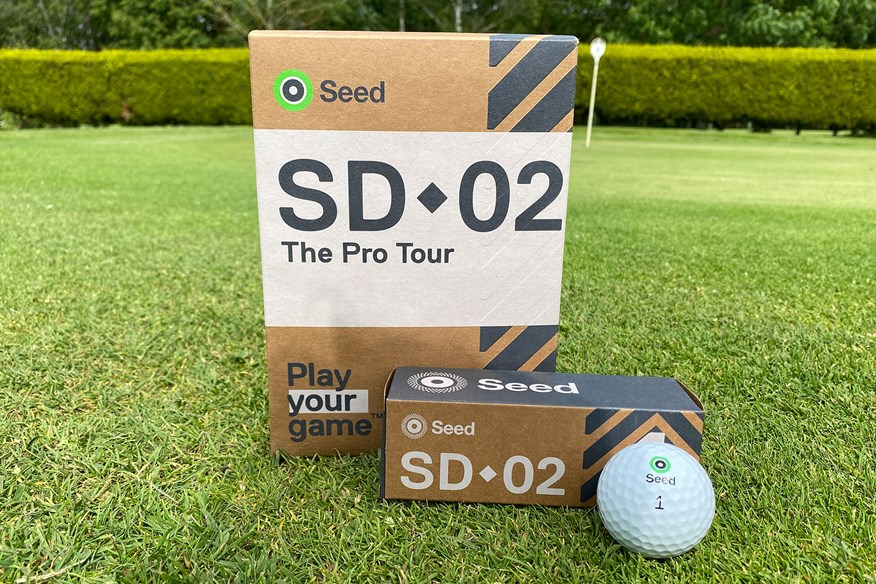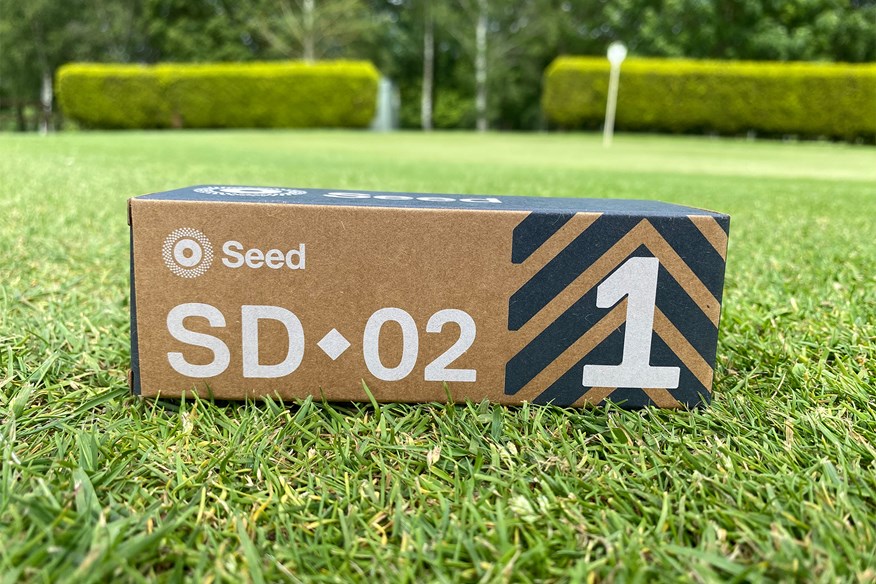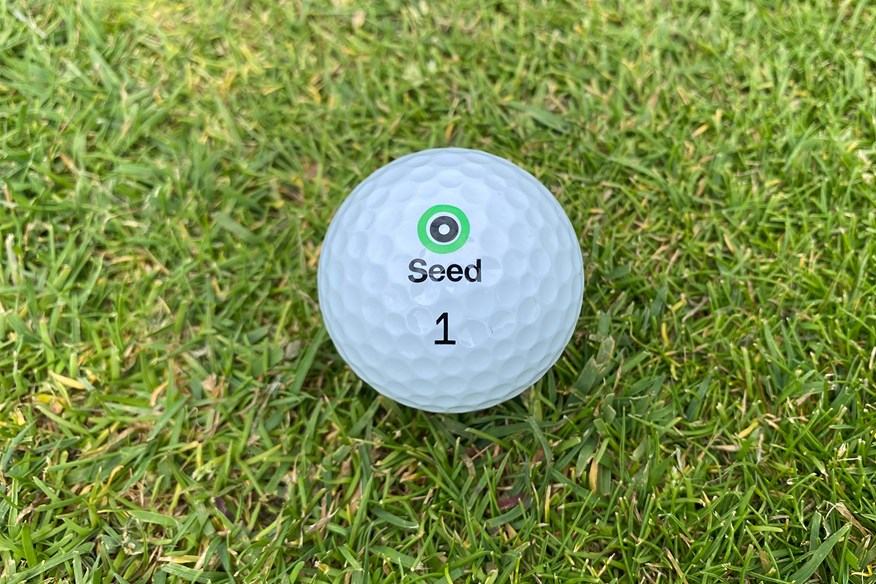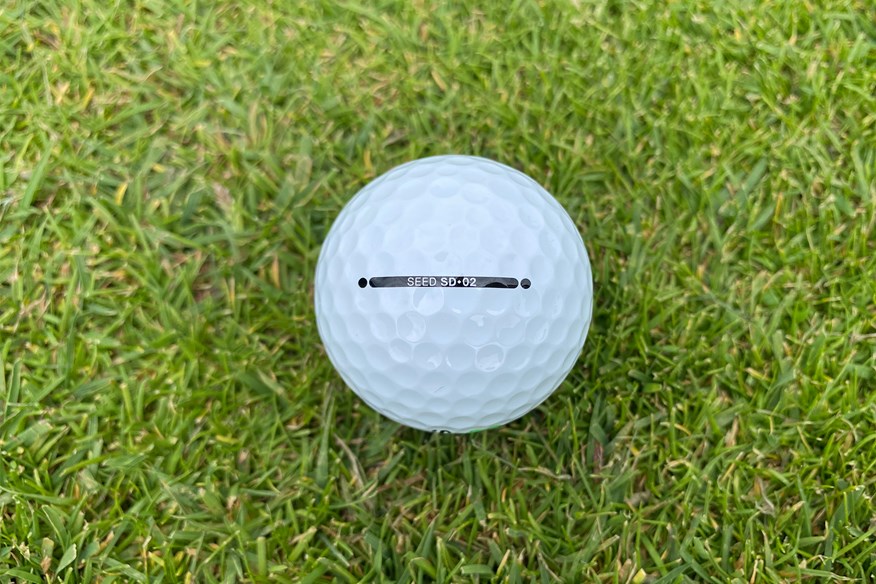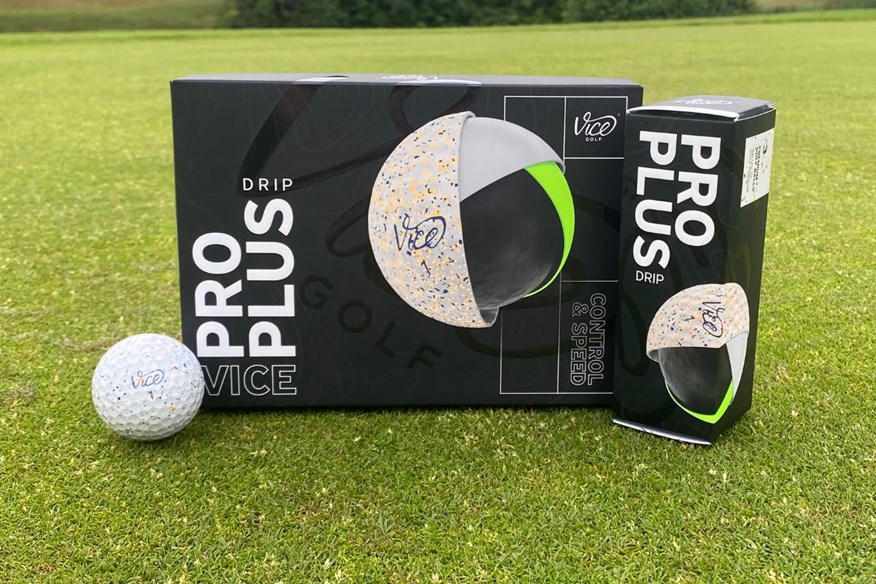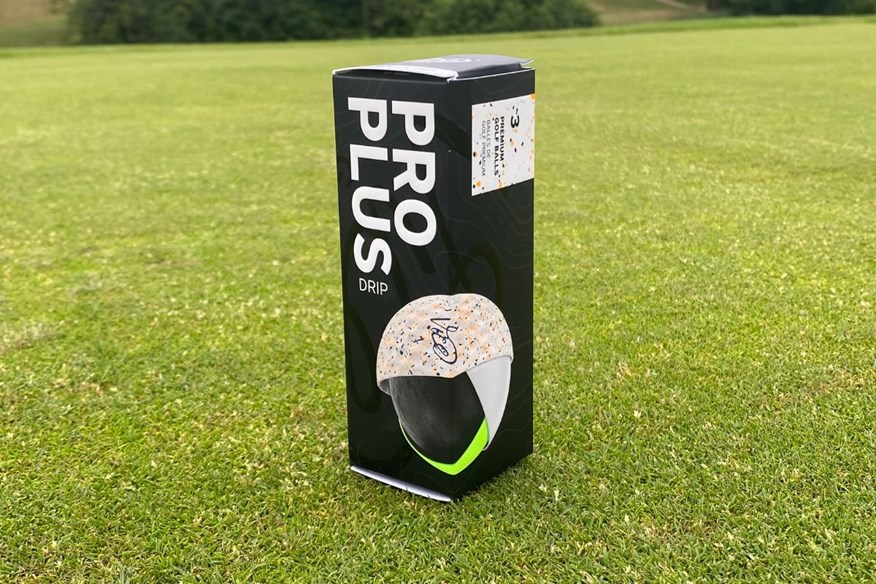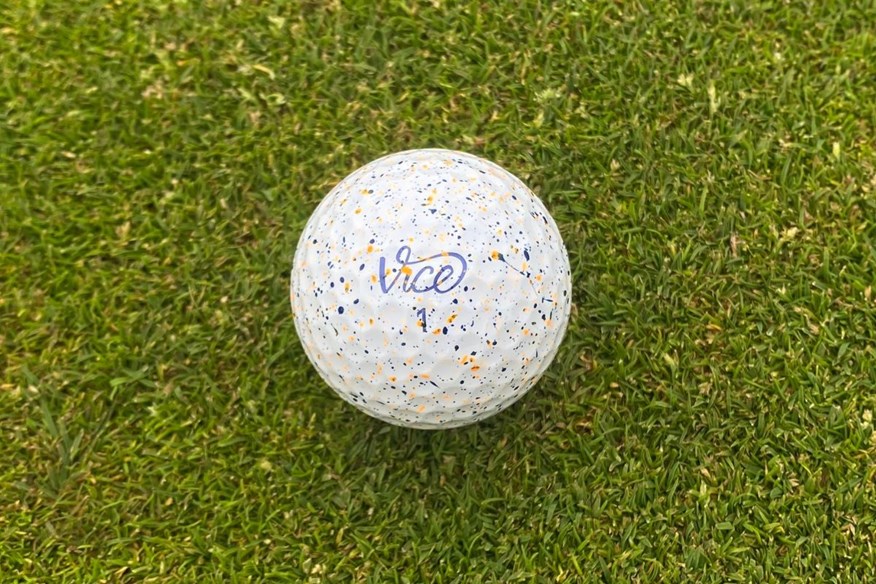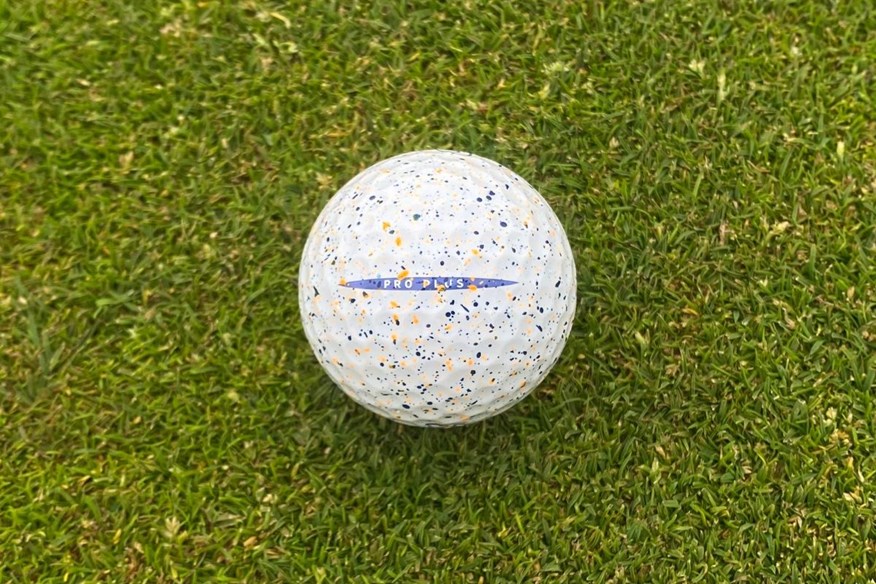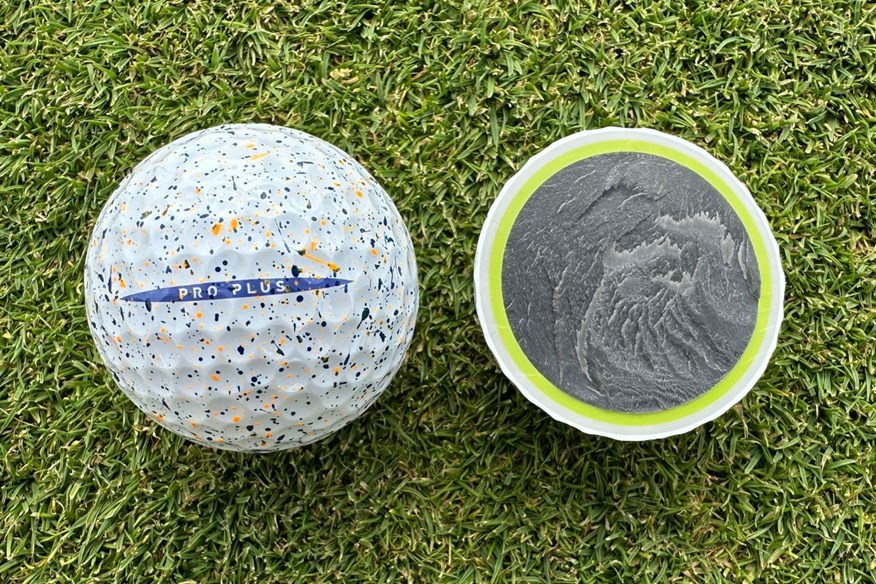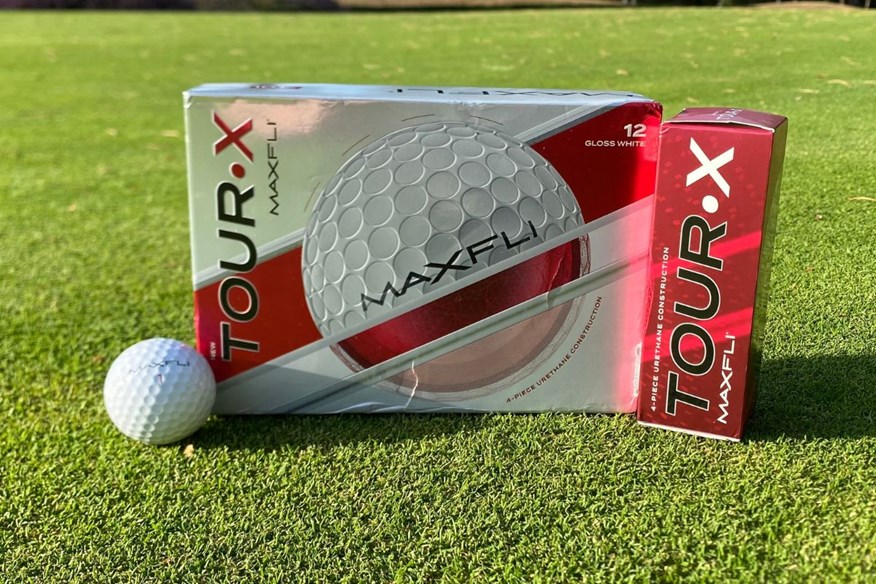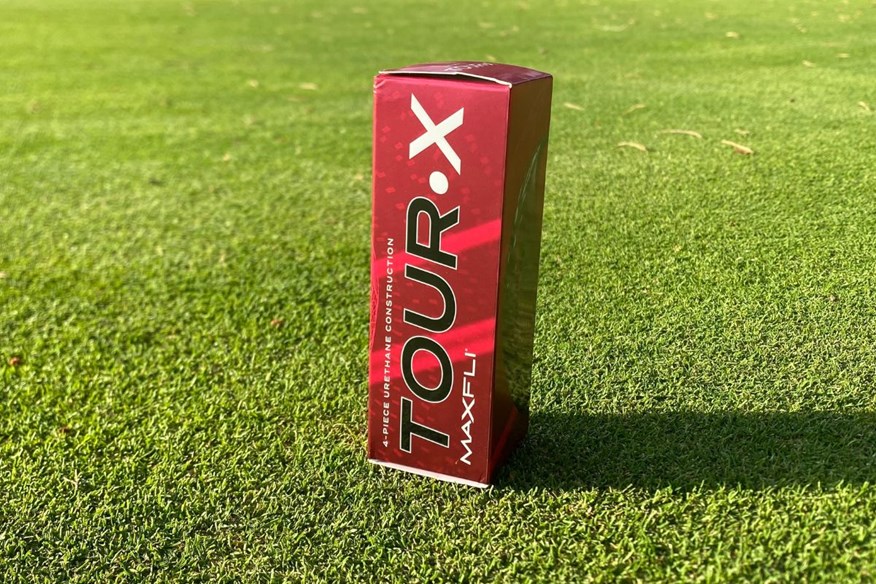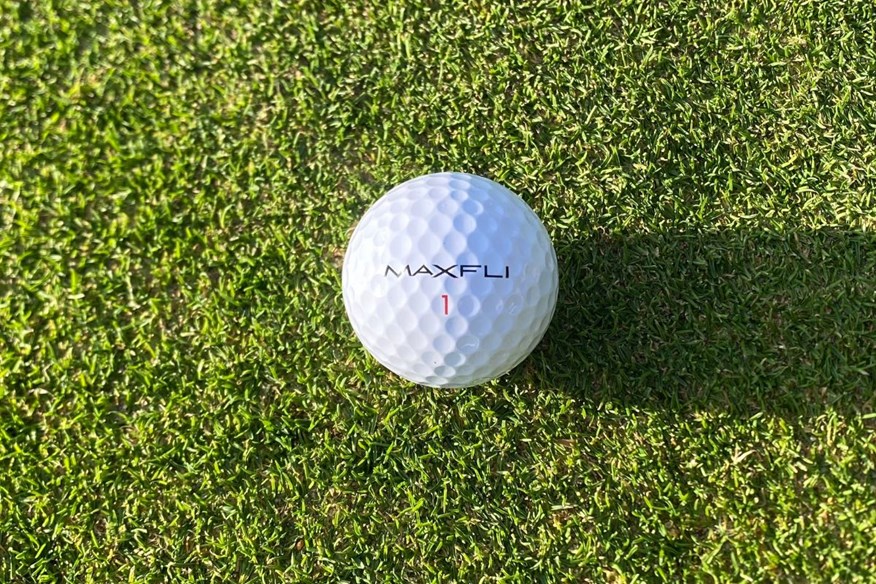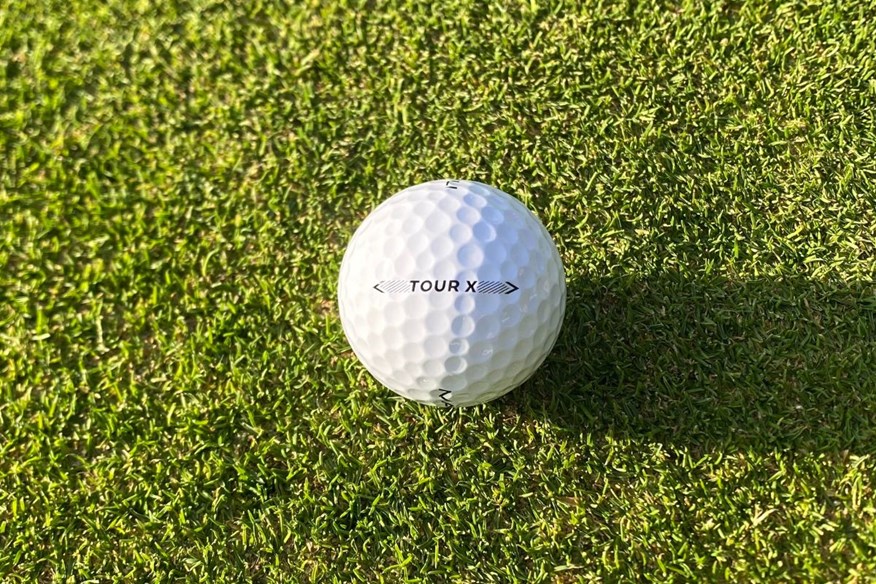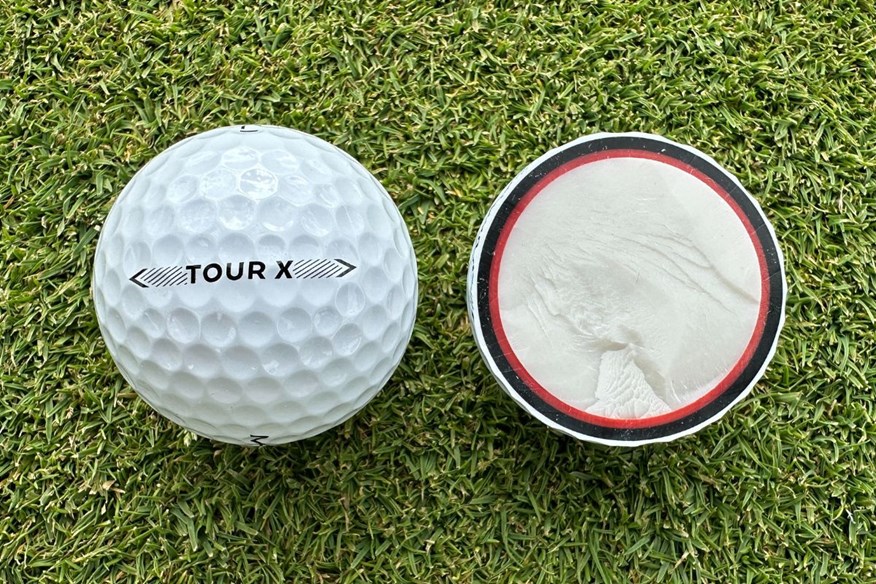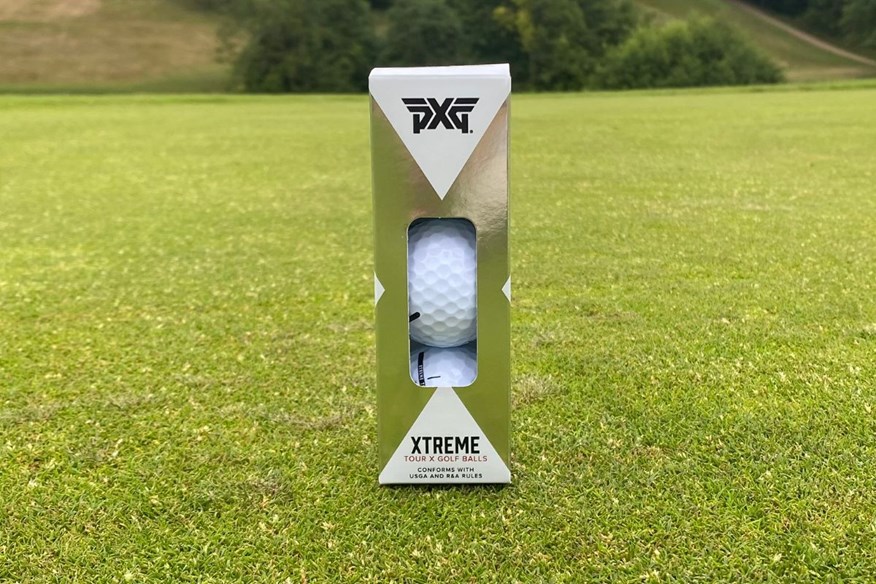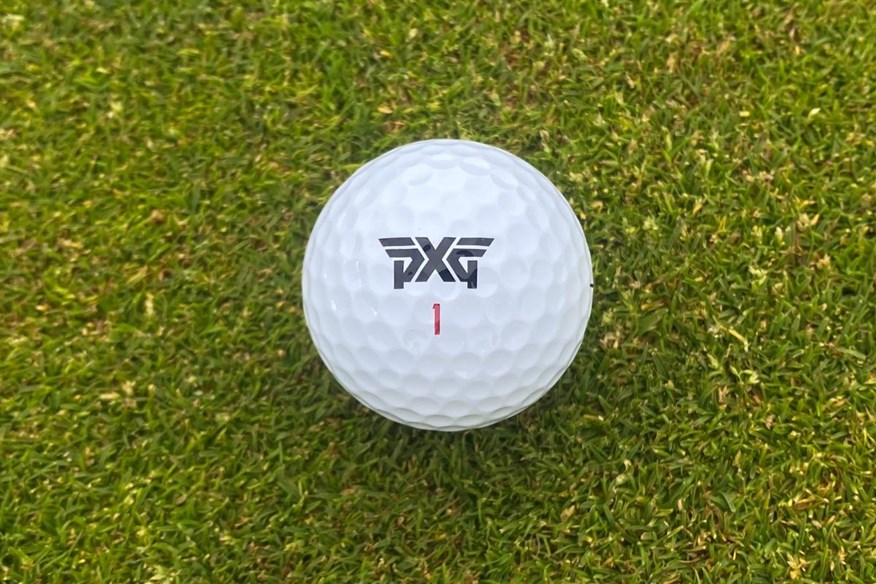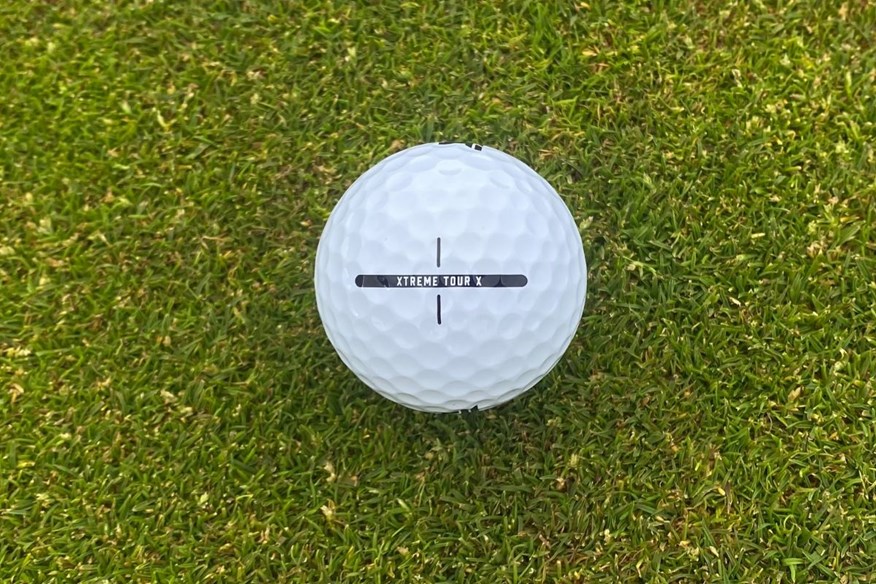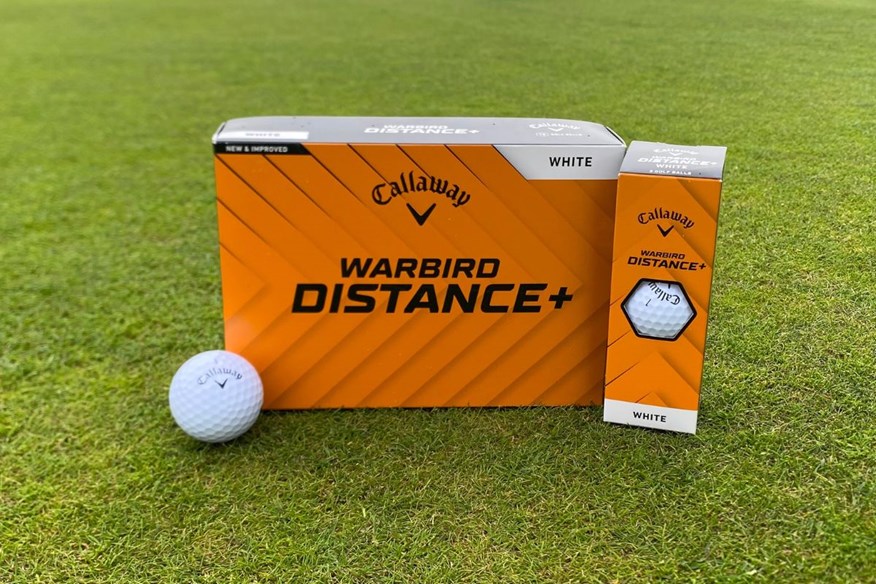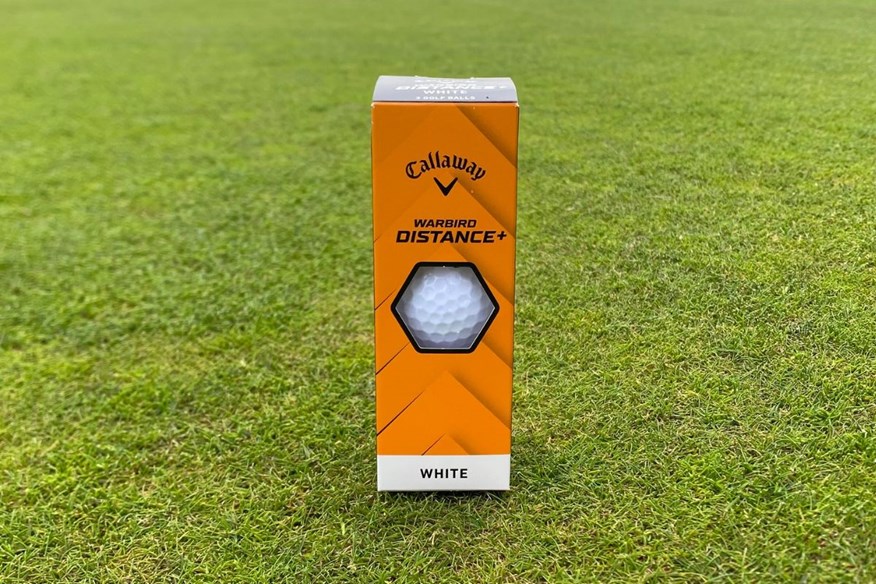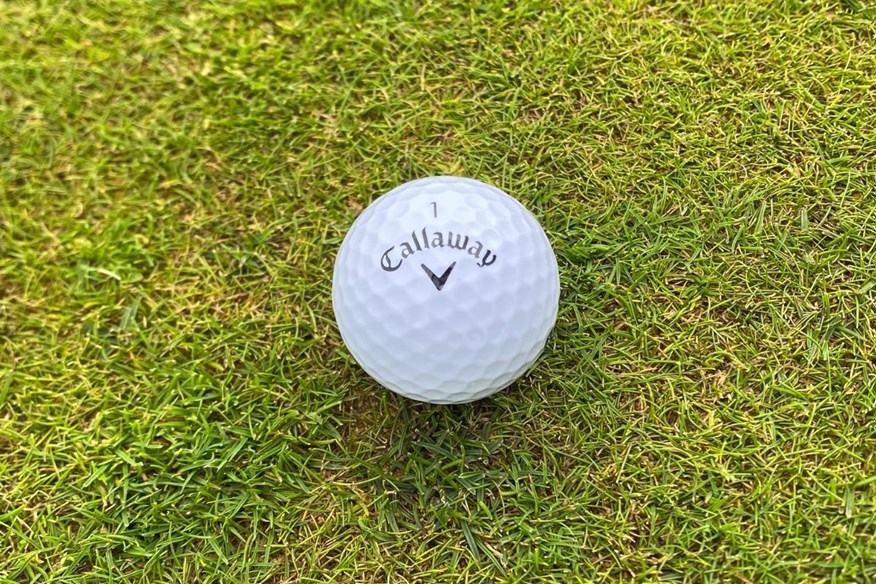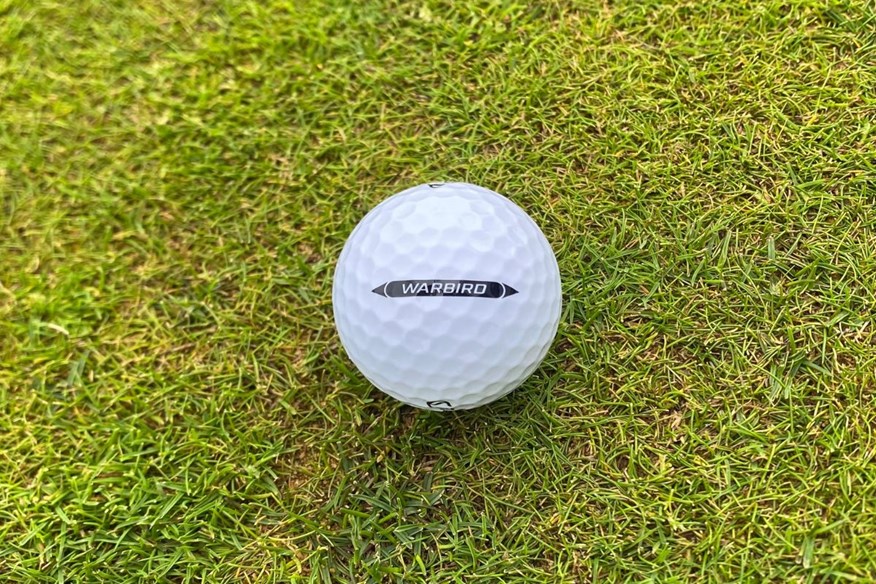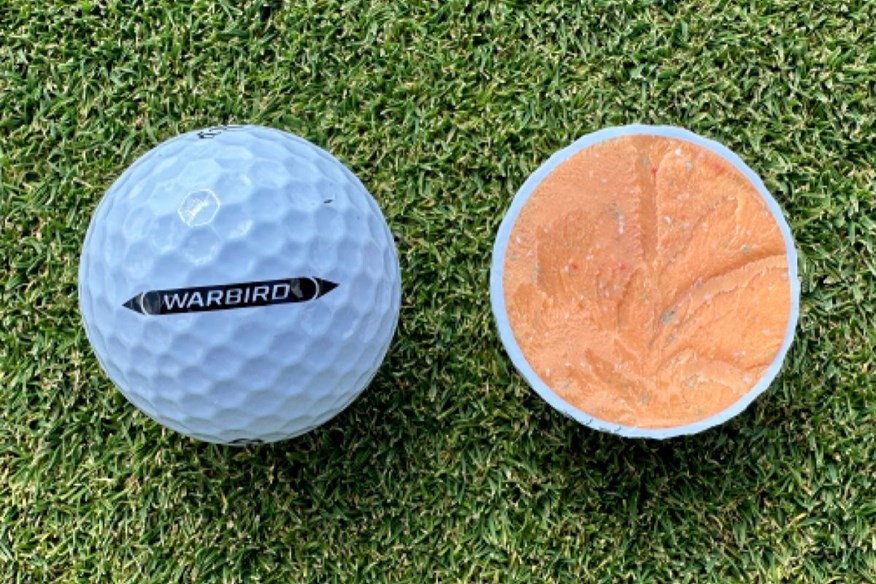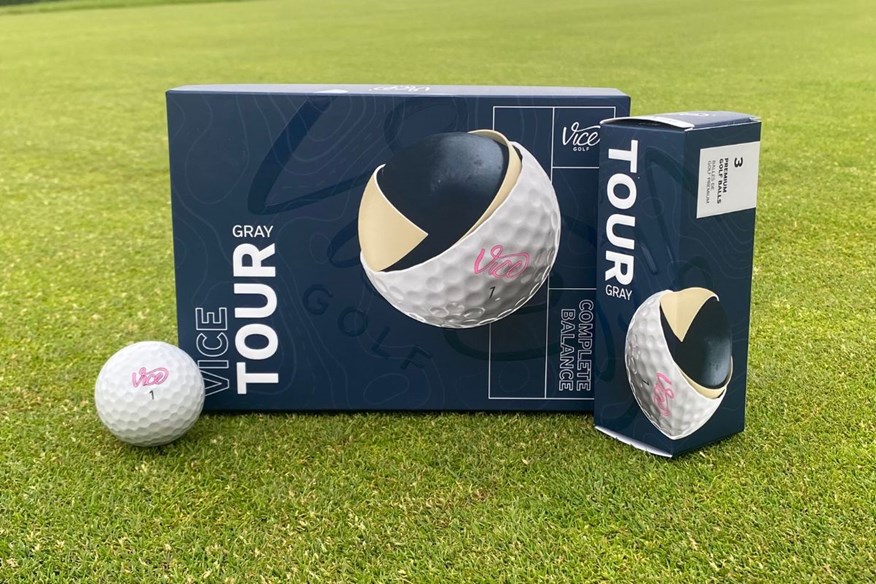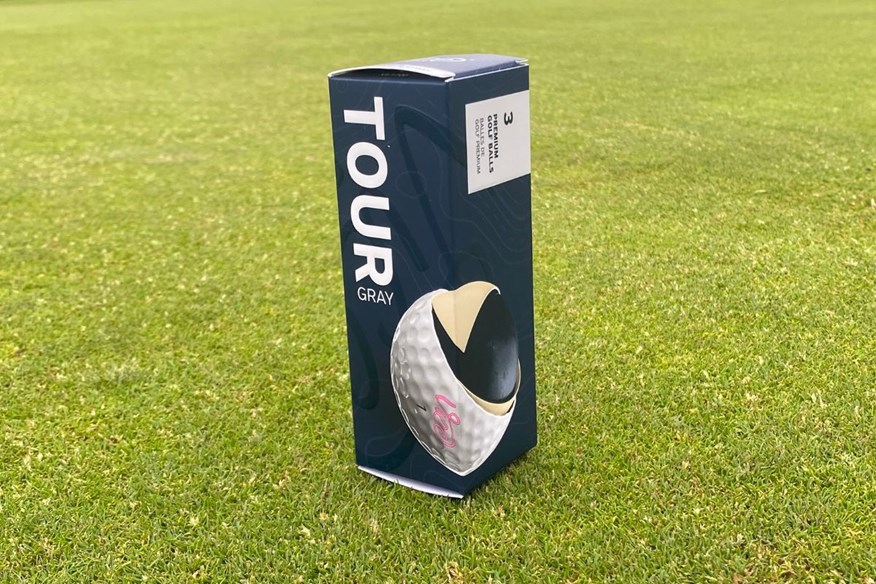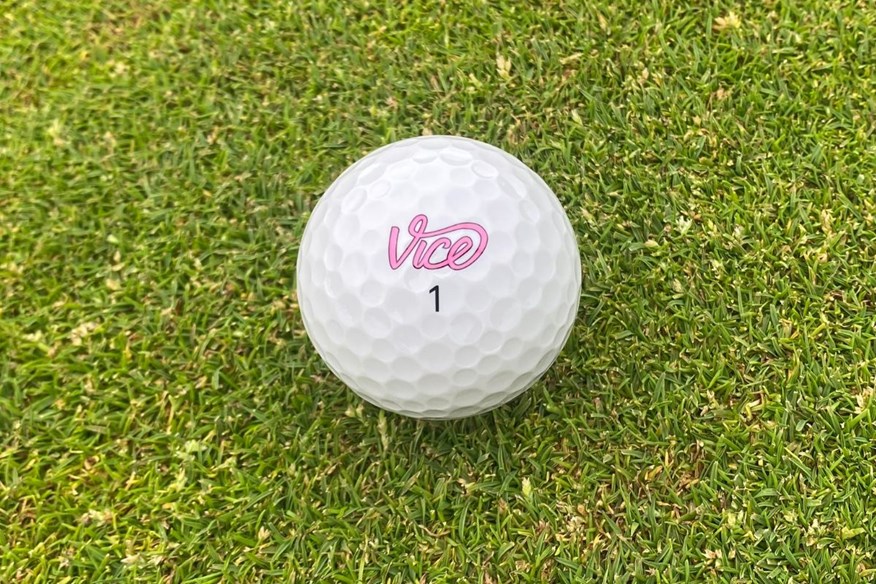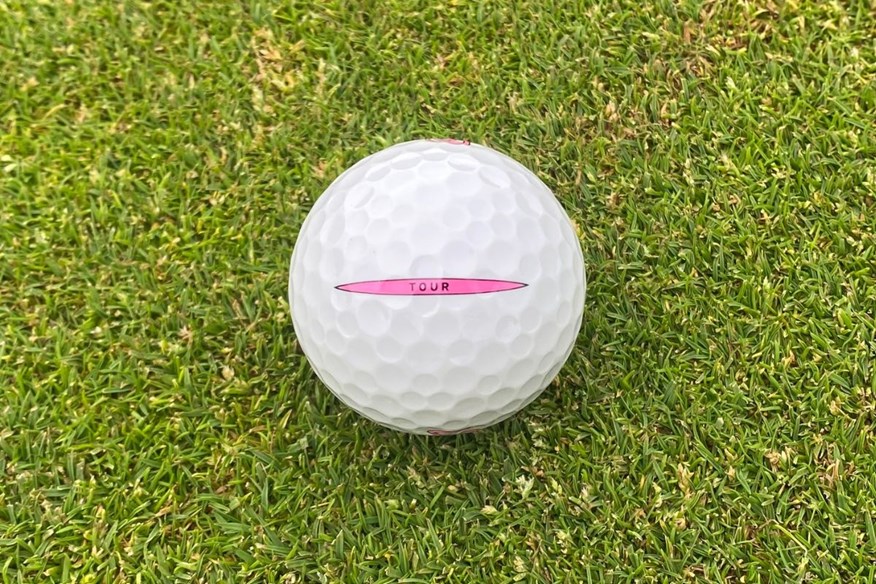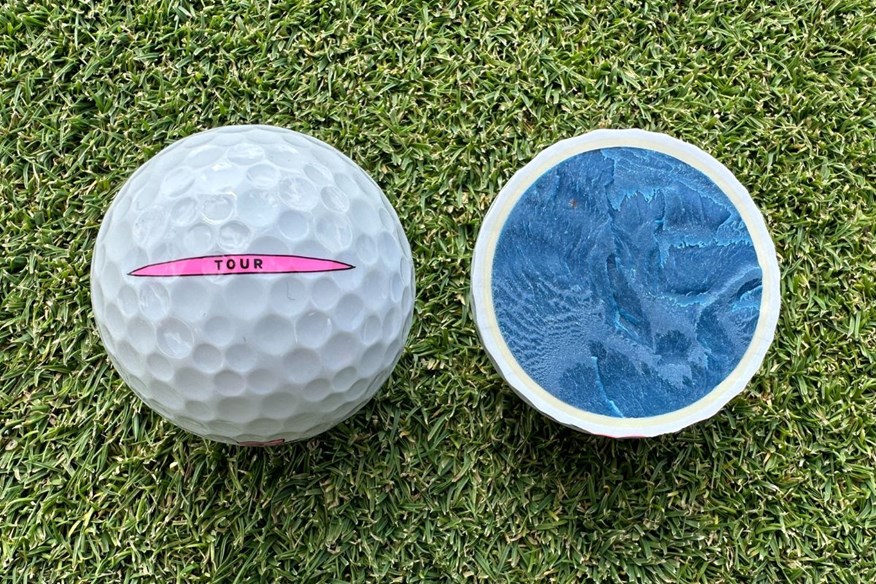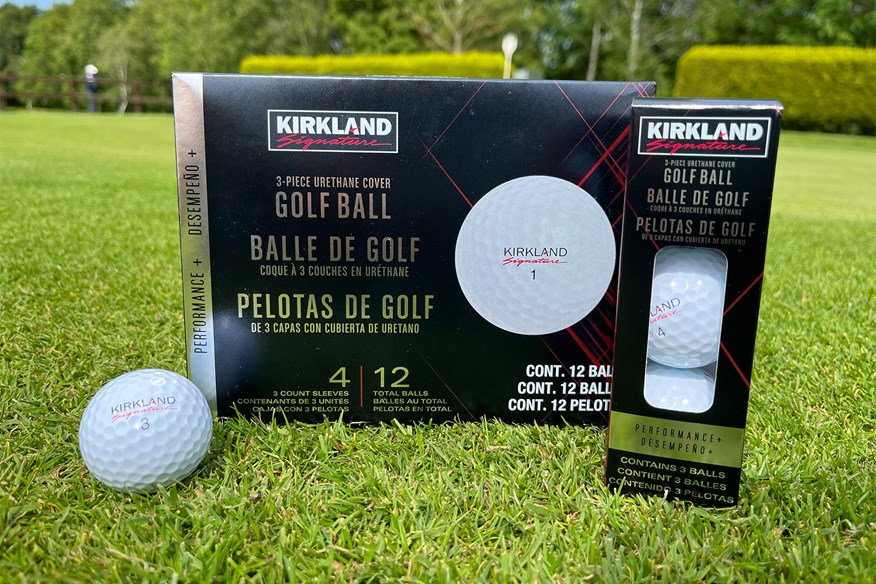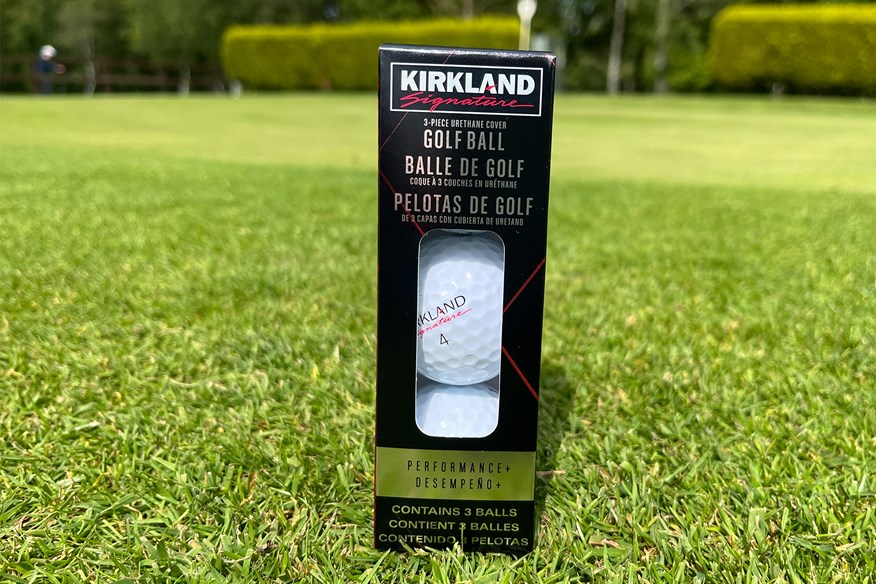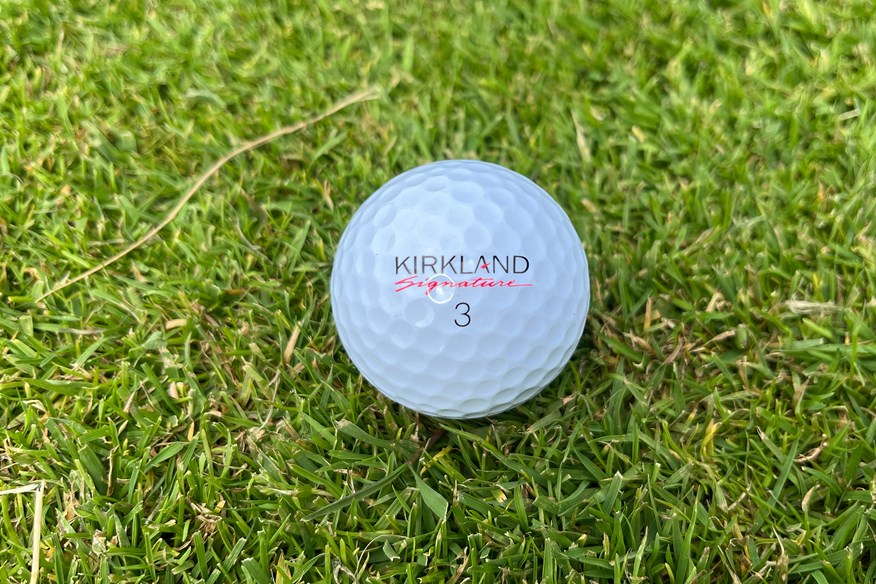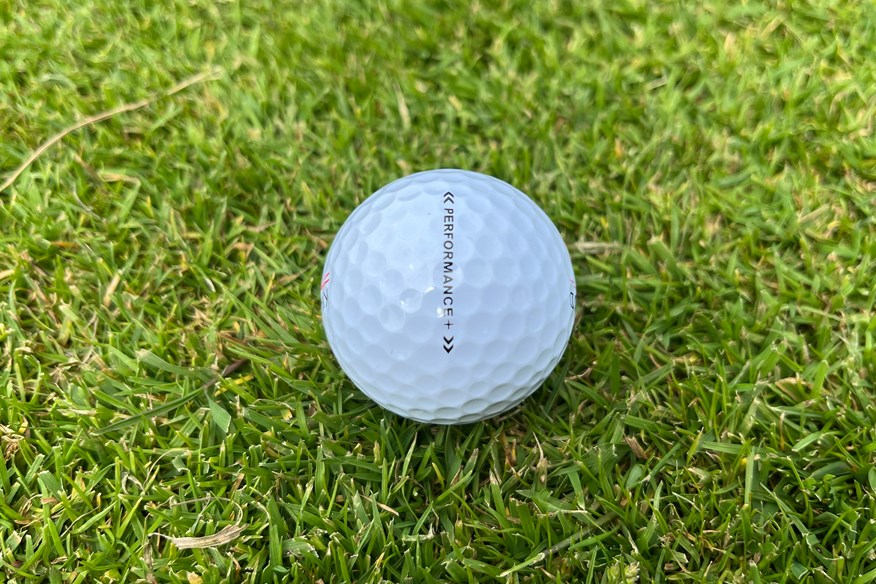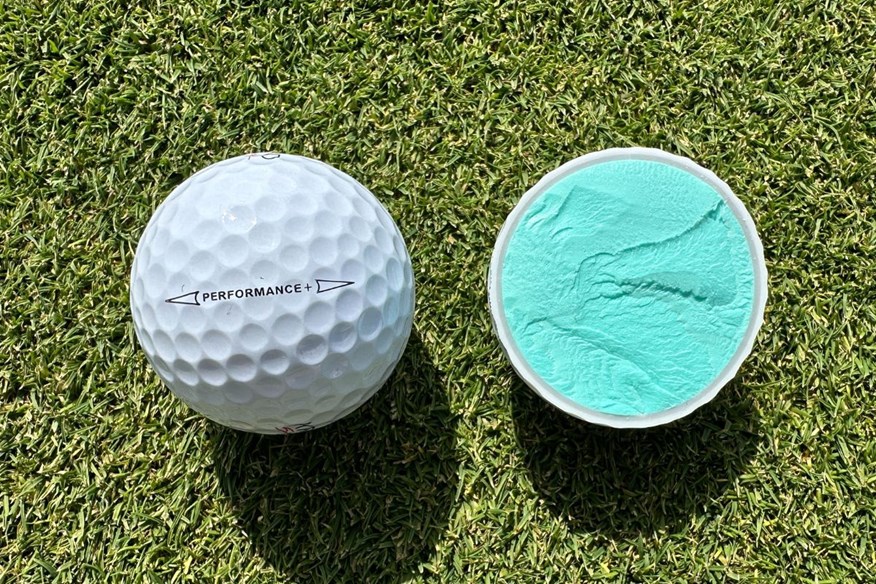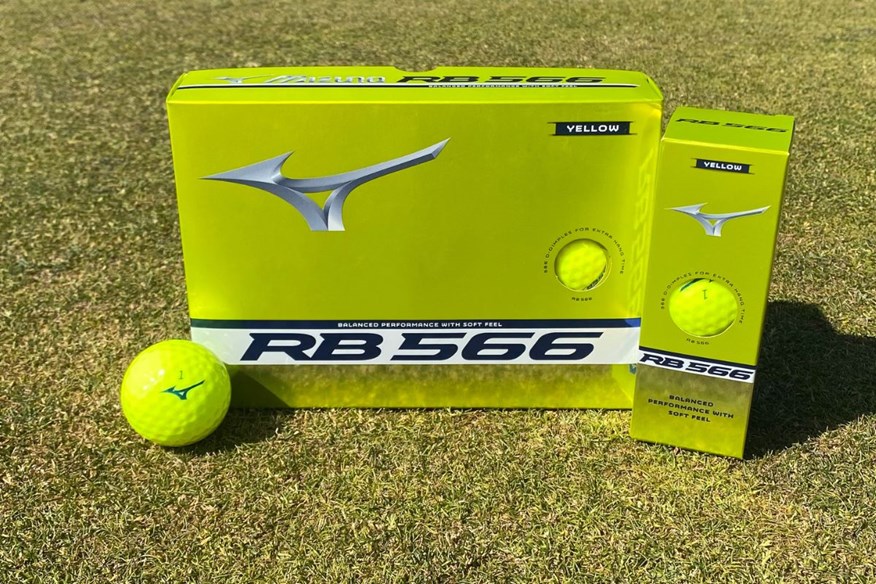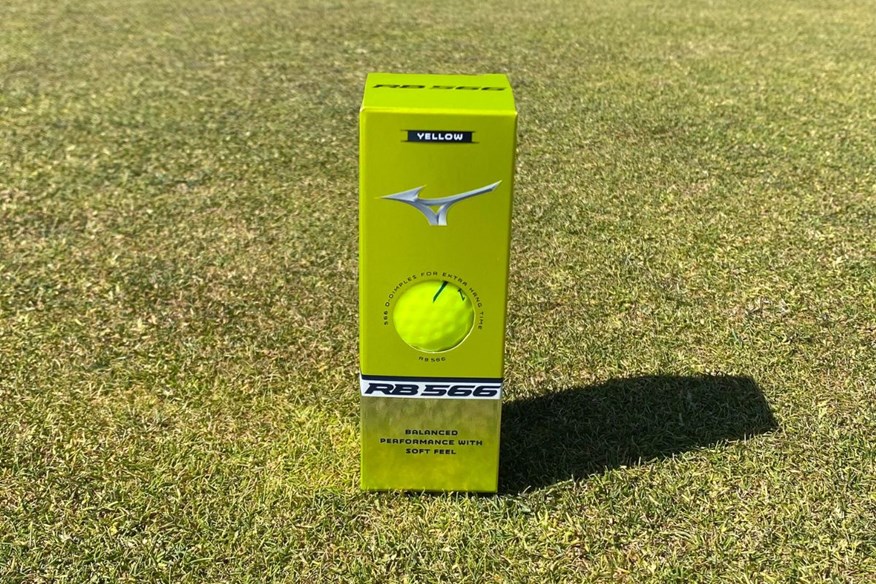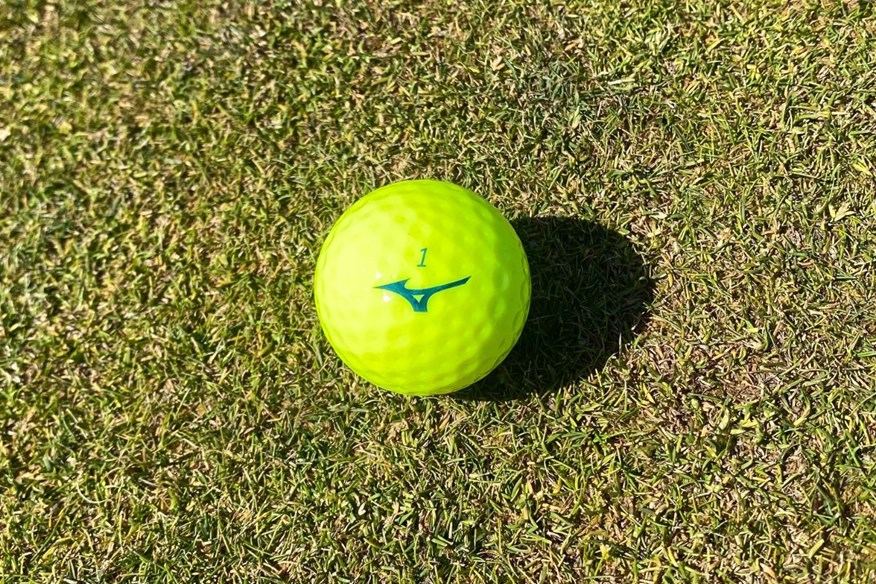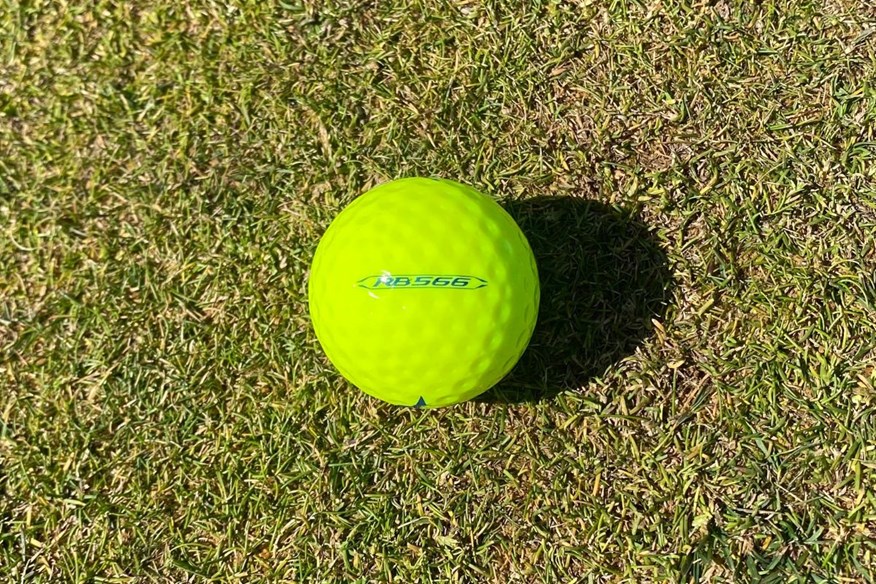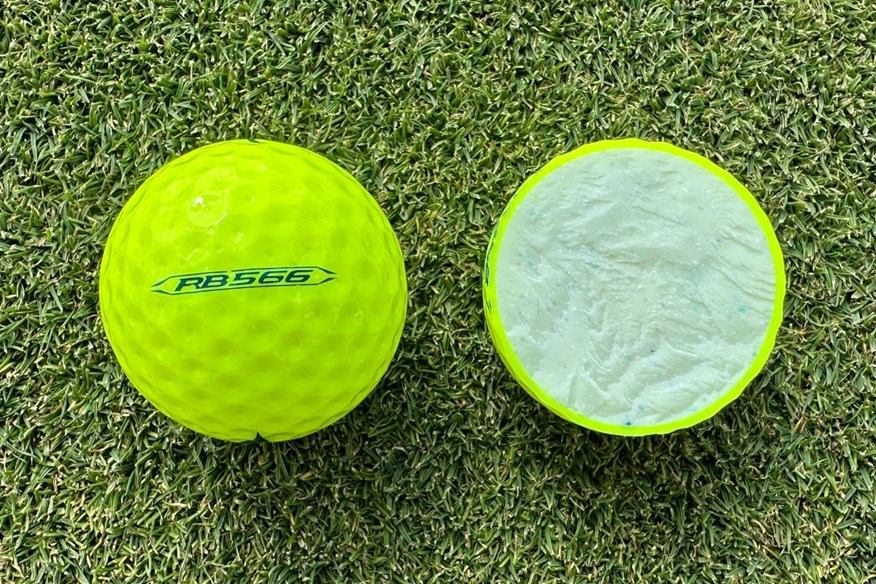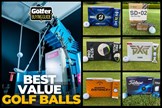Best value golf balls 2025: 62 models robot tested to find you the most cost-effective options
Last updated:

Click here to find out how we conducted our 2025 golf balls test
We’ve tested 62 golf balls on an R&D robot and on the golf course to find you the best value golf balls. Whether you’re looking for a premium or two-piece model, we’re here to help you find amazing value for your next golf ball purchase
Jump to:
While every golfer is searching for the best golf balls they can play with, there is no harm in trying to save some money and find a good golf ball deal. For some golfers, hearing the word value might instantly make them think cheap and inferior – that’s certainly not the case.
You can find value in every category of golf balls, whether it be the best premium golf balls or the best two-piece golf balls. With many people feeling the pinch of the cost of living, there isn’t a better time to look for the best value golf balls.
To help you in your search for the right golf ball, we carried out our biggest ever golf ball robot test – 62 models from 13 manufacturers. As well as testing on the robot, every golf ball has been tested on-course to provide you with a personal verdict. Click the links below to see how we completed this year’s robot test and to find out exactly how we test golf equipment.
- 2025 golf ball robot test: 62 golf balls, 2,232 shots, 50,000 data points… find out what’s No.1 for you
- How we test golf equipment at Today’s Golfer
A term such as value is ambiguous and personal. Some golfers will think only the best cheap golf balls provide value, but for others, that won’t be the case – there will be many other factors. We believe several factors determine whether a golf ball is good value or not, and these have all been considered.
Best value golf balls 2025: At a glance
Best overall: Bridgestone e12 Speed | View offer
Best premium: Seed SD-02 | View offer
Best three-piece: PXG Xtreme Tour X | View offer
Best Titleist: Titleist Tour Soft | View offer
Value doesn’t solely correlate to price, but some of the best cheap golf balls are also considered among the best value golf balls alongside some of the best four- and five-piece golf balls and best 3-piece golf balls.
Cost can’t be the only factor when looking for value, because a golf ball could cost $20 but perform terribly. Therefore, a $40 golf ball that performs as well as $55 golf balls is going to be considered good value.
It’s no surprise that some of the best DTC golf balls are among the best value golf balls, but there might be a couple of surprises…
Best value golf balls 2025
Gold medal for tee to green performance at all three driver swing speeds, off-the-tee performance, and approach play performance
Let's start by running through all of the e12 Speed's awards. Gold medal for tee to green performance at 114mph, 93mph, and 78mph, off-the-tee performance, and approach play performance.
The only area where the e12 Speed didn't rank is short game performance, where it finished in fourth, by 9rpm (5,951).
The e12 Speed is the highest-performing Bridgestone golf ball, factoring in how it performed in every area. Its best performance has to be off the tee. At 114mph, this golf ball was 2.4 yards longer and 0.8mph faster than the second-longest and second-fastest model, and fourth-longest overall (273.9yds).
At 93mph, the e12 Speed is the second longest (209.7yds) and fastest (134.1mph) 2-piece golf ball. But, at 78mph, this golf ball is back at the top of the table for both (161.3yds and 113.2mph).
Combine that performance with its dominating approach play performance, and not only do you have an amazing golf ball off the tee, but you have a fantastic golf ball from tee to green.
The e12 Speed is a golf ball I urge every golfer to consider. This is hands down the best value golf ball in the entire test, and as one of the best performers of all 62 models tested, what harm do you have in giving it a go?
On-course verdict
I was extremely surprised by the on-course performance of the Bridgestone e12 Speed, and having played with this golf ball on a couple of occasions, it has never disappointed.
The first time I played with the e12 Speed had me questioning if it definitely is a two-piece golf ball because it performs much closer to other three-piece Tour-level models.
The Bridgestone golf ball I' like most'm most fond of is the Tour B XS, and I think this performs very similarly - if not better.
The feel is slightly firmer than the Tour B XS, which is something I appreciate, and it does deliver more feedback and response throughout the bag.
Overall, I'm very impressed with the tee to green performance of the e12 Speed. Despite being a two-piece model, I wouldn't be quick to dismiss it.
Pros
- Perfroms more like a premium golf ball
- Outstanding tee to green performance
- Amazing feedback and response
Cons
- Very difficult to criticize
| Carry distance (yds) | Driver 114mph - 273.9 | Driver 93mph - 210 | Driver 78mph - 161.3 | 7-iron - 157.6 |
| Ball speed (mph) | Driver 114mph - 164 | Driver 93mph - 134.1 | Driver 78mph - 113.2 | 7-iron - 109.2 |
| Backspin (rpm) | Driver 114mph - 2,680 | Driver 93mph - 2,574 | Driver 78mph - 2,317 | 7-iron - 4,467 | Pitch - 5,951 |
| Launch angle (°) | Driver 114mph - 11.4 | Driver 93mph - 12.9 | Driver 78mph - 14.1 | 7-iron - 21.3 | Pitch - 30.7 |
| Descent angle (°) | Driver 114mph - 37.6 | Driver 93mph - 31.8 | Driver 78mph - 27 | 7-iron - 45.1 | Pitch - 36 |
| Peak height (yds) | Driver 114mph - 33 | Driver 93mph - 22.3 | Driver 78mph - 15.5 | 7-iron - 30 | Pitch - 6.9 |
| Compression (psi) | 103 |
- Optimal Flight System
- Fast gradational core
- MindSet technology
- 330 dimples
- 2-Piece construction
- Available in white only
Bronze medal for tee to green performance at 78mph
The Seed SD-02 is the best-performing DTC golf ball off the tee. The SD-02 is designed to compete with the likes of the Titleist Pro V1x and TaylorMade TP5x, and that's exactly where it pitches based on the results from our test.
You can even argue it's a better-performing golf ball. At 78mph, the SD-02 is the third-best golf ball from tee to green, and at 93mph and 114mph, it misses out by one, finishing just behind the Pro V1x at 114mph and with the same score as the Staff Model at 93mph.
The SD-02 is such a solid golf ball from tee to green. At all three driver speeds, and with the approach shot, there isn't one area where it doesn't perform well.
Seed says this is a low-launching and low-flying golf ball, but if anything, it is above the average for launch angle and peak height in this category of golf balls.
This is supposedly Seed's highest-spinning golf ball around the green, but it's not as high-spinning as the SD-01. The SD-02 is also not as high-spinning in approach play as other Seed golf balls, and it's the lowest-spinning golf ball within this category (4,397rpm).
However, thanks to the steep descent angle, you can expect the SD-02 to hit and hold greens and come to a quick stop in the short game.
The Seed SD-02 is a solid golf ball from tee to green at varying swing speeds. It's not as high-spinning as other golf balls in this category or other Seed golf balls, but considering this is said to challenge the Pro V1x and TP5x, it does do that, at a cheaper price.
On-course verdict
I genuinely believe that any golfer could play with this golf ball and make it work for them. The SD-02 does it all. It’s long off the tee, it spins on approach shots, and it rolls perfectly on the putting surface.
The ball flight is consistent above all else, so I feel like I can trust that this golf ball will behave off the tee and help me find the fairway. The other plus off the tee is that it’s long, which no golfer can complain about.
The SD-02 feels slightly softer than other X-model golf balls, which will please most golfers because typically X-models tend to be firmer-feeling. I’m a fan of a firmer golf ball, and the SD-02 still feels really good to me.
Throughout the bag, the response you get from the SD-02 is very strong. If you hit the ball well, you’ll know, and if you hit the ball badly (sadly), you’ll know.
Read our full Seed SD-02 golf ball review.
Pros
- Amazing versatile golf ball that works for a wide range of golfers
- Good distance off the tee
- Incredible value for money
Cons
- A lower ball flight compared to other X-model golf balls
| Carry distance (yds) | Driver 114mph - 272.8 | Driver 93mph - 209.7 | Driver 78mph - 162.4 | 7-iron - 158.7 |
| Ball speed (mph) | Driver 114mph - 163.8 | Driver 93mph - 134.2 | Driver 78mph - 113.4 | 7-iron - 109.5 |
| Backspin (rpm) | Driver 114mph - 2,688 | Driver 93mph - 2,718 | Driver 78mph - 2,484 | 7-iron - 4,397 | Pitch - 5,845 |
| Launch angle (°) | Driver 114mph - 11 | Driver 93mph - 12.8 | Driver 78mph - 14 | 7-iron - 21.3 | Pitch - 30.9 |
| Descent angle (°) | Driver 114mph - 37 | Driver 93mph - 32.5 | Driver 78mph - 27.8 | 7-iron - 45 | Pitch - 36.4 |
| Peak height (yds) | Driver 114mph - 32.1 | Driver 93mph - 22.7 | Driver 78mph - 15.9 | 7-iron - 30 | Pitch - 7 |
| Compression (psi) | 104 |
- High energy rubber core
- Ultra thin DuPont Surlyn mantle
- DuPont HPF inner cover
- Soft cast urethane cover
- 336 dimples
- 4-Piece construction
- Available in white only
Vice's fastest and longest golf ball
The Vice Pro Plus is one of four golf balls in this category that didn't receive an award, but don't let that put you off. That's largely due to its tee performance. While this is the fastest and longest Vice golf ball, it's not overly competitive against other four-piece and five-piece golf balls.
At 114mph, Pro Plus is the third-lowest performing golf ball, the lowest performing at 93mph, and the third-lowest performing at 78mph. However, for approach play and short game performance, the Pro Plus does improve.
The backspin generated by the Pro Plus with the 7-iron shot is the third-highest within this category (4,807rpm), and the descent angle is 45.1°. The Pro Plus finished just outside the podium places for approach play performance.
It's the same story for short game performance. With 6,090rpm, Pro Plus finished fourth for short game performance by one revolution.
With the Vice Pro Plus, you might not have the most competitive golf ball off the tee, but from the fairway and around the greens, you can expect a golf ball that'll spin easily and is easy to control.
On-course verdict
This is the only golf ball in Vice's Pro range I recommend. That might sound harsh, considering the Pro is one of the best three-piece Tour-level golf balls, but in my on-course experience, I've not seen enough from the Pro that would make me recommend it over the Pro Plus.
This golf ball loses absolutely zero marks for distance, and as a whole, off the tee, I really couldn’t criticise the Pro Plus (except for one thing, which I’ll come to later). My main gripe is its performance around the greens; I just don’t feel as though it spins enough compared to other X-model golf balls.
It could be down to my chipping action, but I definitely find my joy around the greens with other golf balls when it comes to spin and control. Approaching greens, I feel very much the same as I do with regards to this golf ball’s performance off the tee.
Throughout the bag, I get very little feedback from any strike, whether it be good or bad. I distinctly remember hitting a really good tee shot on the 8th hole on the Ailsa Course at Turnberry and saying that it felt “dead”. When you really nail a drive, you want to be saying “that felt amazing,” but it left me feeling underwhelmed.
On the putting green, I feel as though there are more responsive golf balls than the Pro Plus, but you can’t argue with the roll, because it’s solid.
Ultimately, my overarching opinion on the feel and response of the Pro Plus is – as I’ve already mentioned – underwhelming.
Read our full Vice Pro Plus golf ball review.
Pros
- Solid performance from tee to green
- Brilliant value for a premium product
- A versatile model that works for ranging swing speeds
Cons
- A slightly muted feeling and limited feedback
| Carry distance (yds) | Driver 114mph - 271.9 | Driver 93mph - 208.2 | Driver 78mph - 160.5 | 7-iron - 155.2 |
| Ball speed (mph) | Driver 114mph - 163.6 | Driver 93mph - 133.7 | Driver 78mph - 114.3 | 7-iron - 112.9 |
| Backspin (rpm) | Driver 114mph - 2,780 | Driver 93mph - 2,848 | Driver 78mph - 2,643 | 7-iron - 4,807 | Pitch - 6,090 |
| Launch angle (°) | Driver 114mph - 10.9 | Driver 93mph - 12.7 | Driver 78mph - 13.7 | 7-iron - 20.8 | Pitch - 30.3 |
| Descent angle (°) | Driver 114mph - 37.4 | Driver 93mph - 33 | Driver 78mph - 27.8 | 7-iron - 45.1 | Pitch - 35.4 |
| Peak height (yds) | Driver 114mph - 32.2 | Driver 93mph - 22.8 | Driver 78mph - 15.6 | 7-iron - 29.4 | Pitch - 6.6 |
| Compression (psi) | 116 |
- Ultra thin cast urethane cover
- Versatile magnesium ionomer outer mantle
- Surlyn grade inner mantle
- Lightweight speed core
- 336 dimples
- 4-Piece construction
- Available in white and lime
- Alternative models include Drip, Shade, and Tracer
Maxfli's fastest and longest golf ball
Saying a golf ball is average might sound like a negative, but it's actually more of a compliment than you might initially think. The Maxfli Tour X has no areas where it massively excels, but also no areas where it lacks performance.
Maxfli Tour X didn't win any awards in our test, but nothing jumps out to put you off this golf ball. At all three driver swing speeds, the biggest distance between this golf ball and the best is 3.3 yards and 1.1mph ball speed - at 114mph.
With approach play and short game performance, it's a very similar story. The Tour X isn't setting any standards for spin, but it's up there with the higher-spinning golf balls.
It's difficult to criticise the Maxfli Tour X because it's such a solid golf ball from tee to green. Are there better options out there? 100 percent, but for the price, and with Tour approval, this is a brilliant four-piece Tour-level golf ball.
On-course verdict
I'm a massive fan of the Maxfli Tour X. I think it plays very honest and true to how a four-piece golf ball should play. The Tour X doesn't struggle in generating spin anywhere on the golf course, which is something I like, but some of you might not.
Off the tee and around the green, the Tour X is very easy to control because of its high-spinning nature. I don't think spin hinders the performance of this ball on-course, but for some of you who don't require a high-spin model, the Tour X might be a bit too much.
My favorite aspect of the Tour X is its firmness. This is one of the firmer golf balls on the market, and I absolutely love that! You get instant feedback from every shot. I remember giving a sleeve to my playing partner, and the first time he hit one, he instantly looked to me because it produced a sound and feel he'd never encountered before.
Based on sound, feel, and spin, this is a very genuine four-piece golf ball that offers great tee-to-green performance.
Pros
- Consistent golf ball in every area
- Amazing value
- Great feel, feedback, and response
Cons
- Not a special golf ball that's going to blow you away
| Carry distance (yds) | Driver 114mph - 272.3 | Driver 93mph - 209.8 | Driver 78mph - 161.2 | 7-iron - 156.2 |
| Ball speed (mph) | Driver 114mph - 164 | Driver 93mph - 134.4 | Driver 78mph - 113.2 | 7-iron - 109.1 |
| Backspin (rpm) | Driver 114mph - 2,828 | Driver 93mph - 2,860 | Driver 78mph - 2,701 | 7-iron - 4,694 | Pitch - 6,028 |
| Launch angle (°) | Driver 114mph - 11 | Driver 93mph - 12.7 | Driver 78mph - 13.7 | 7-iron - 20.9 | Pitch - 30.5 |
| Descent angle (°) | Driver 114mph - 38.1 | Driver 93mph - 33.2 | Driver 78mph - 28.1 | 7-iron - 45.1 | Pitch - 35.7 |
| Peak height (yds) | Driver 114mph - 33.1 | Driver 93mph - 23.1 | Driver 78mph - 15.7 | 7-iron - 29.6 | Pitch - 6.7 |
| Compression (psi) | 117 |
- Cast urethane cover
- Polyhedron 336 dimple design
- Dual Ionomer mantle
- High energy core
- 4-Piece construction
- Available in white and yellow
Silver medal for off-the-tee performance
The second generation of PXG golf balls are very impressive, and the Xtreme Tour X model emerged from our test as being the better-performing model compared to the Xtreme Tour. Especially off the tee, being the second-best golf ball in this category.
At all three driver swing speeds, the Xtreme Tour X is a long and fast golf ball off the tee, making it an incredibly versatile option for any golfer to consider. At 114mph, it's the third longest (272.8yds) and second fastest (164mph), at 93mph, it's the second longest (209.4yds) and second fastest (134.1mph), and at 78mph, it's the fourth longest (160.8yds) and third fastest (113mph). A seriously impressive golf ball off the tee for all golfers.
Approaching and playing around greens, you can expect a high-performing golf ball that will easily sit and grab, being the fifth-highest-spinning golf ball (4,820rpm) and having the second steepest descent angle (45.2°) from the 7-iron shot, and being the fourth-highest-spinning model (5,961rpm) with the 40-yard pitch shot.
Combine off-the-tee performance with approach play performance, and it's easy to see how the Xtreme Tour X also won bronze for tee to green performance at 114mph and 93mph.
The only issue with the Xtreme Tour X is its carry distance consistency with the 7-iron shot, ranking 46th overall. Take away the inconsistent distances when approaching greens, and you have an extremely solid golf ball that could easily have won more awards.
On-course verdict
I haven't had the pleasure of playing with the PXG Xtreme Tour X golf balls, but fellow TG Equipment Writer, Will Shreeve-Peacock, has - here's his verdict:
"As a golfer who religiously plays the Titleist Pro V1x, I was pleasantly surprised to find that the Xtreme Tour X is about as close to the real thing as I’ve seen to my go-to ball.
"While the urethane cover does feel and look slightly different, the overall feedback and performance felt instantly familiar.
"Off the face, there’s plenty of speed, but also ample spin with irons and in the short game. Around the greens and off the putter, the feel was virtually identical to the Pro V1x, soft, responsive, and confidence-inspiring. Just what I play the V1x for!
"The long-game performance impressed me the most: it feels soft off the face, launches well, and doesn’t spin up too much, addressing one of the issues I had with the original PXG Xtreme."
Pros
- Brilliant performance off the tee
- Great tee to green performance
- Amazing value
Cons
- Inconsistent distances when approaching greens
| Carry distance (yds) | Driver 114mph - 272.8 | Driver 93mph - 209.4 | Driver 78mph - 160.8 | 7-iron - 154.7 |
| Ball speed (mph) | Driver 114mph - 164 | Driver 93mph - 134.1 | Driver 78mph - 113 | 7-iron - 108.7 |
| Backspin (rpm) | Driver 114mph - 2,829 | Driver 93mph - 2,688 | Driver 78mph - 2,458 | 7-iron - 4,820 | Pitch - 5,961 |
| Launch angle (°) | Driver 114mph - 11.2 | Driver 93mph - 12.7 | Driver 78mph - 14 | 7-iron - 20.9 | Pitch - 30.2 |
| Descent angle (°) | Driver 114mph - 38.4 | Driver 93mph - 32.2 | Driver 78mph - 27.4 | 7-iron - 45.2 | Pitch - 35.3 |
| Peak height (yds) | Driver 114mph - 33.3 | Driver 93mph - 22.4 | Driver 78mph - 15.5 | 7-iron - 29.5 | Pitch - 6.6 |
| Compression (psi) | 112 |
- High-speed polybutadiene core
- lonomer mid-layer
- Soft yet durable cover
- High penetrating trajectory
- Dual Dimple
- Seamless Cover
- 338 dimples
- 3-Piece construction
- Available in white only
Silver medal for tee to green performance at 93mph and 78mph and short game performance
The Warbird Distance+ is Callaway's cheapest golf ball, but it certainly doesn't perform as though it is. This model scooped up the second-most awards in the two-piece category.
Tee to green performance is incredibly strong at all three swing speeds. The Warbird Distance+ won silver at 93mph and 78mph, and bronze at 114mph. Distance is definitely a strong factor, being the third-best golf ball off the tee in this category.
However, this golf ball isn't purely a distance model (despite it being in its name). For short game performance, the Warbird Distance+ is the second-highest-spinning two-piece model (5,963rpm) and the third-highest-spinning Callaway golf ball.
We're really impressed by the overall performance of the Warbird Distance+. It's firmly put this golf ball on our radar, and with its test results, it should be for you, too!
On-course verdict
I didn't have particularly high hopes for the Callaway Warbird Distance+ given its price, construction, and name, but I'm happy to have been proven wrong.
The Warbird Distance+ doesn't feel the greatest. It's slightly clicky and clunky, which doesn't make the feedback and response very pleasant, but if you can look past that, this is a solid golf ball from tee to green.
Despite being a distance golf ball, the Warbird Distance+ offers much more than solely distance. This golf ball produces high-spin when attacking pins with an iron and wedge - something you don't always expect from a distance golf ball, but it's always appreciated.
Although the Warbird Distance+ offers more than distance, distance is very impressive with this model, thanks to the reduced spin. The carry distance is long, but the ball continues to roll a long way, delivering amazing total distance.
The Warbird Distance+ might not jump out as a must-have golf ball, but you won't be disappointed if you give it a go - I most certainly wasn't.
Pros
- Solid tee to green performance
- Surprisingly strong short-game performance
- Impressive distance
Cons
- Not the nicest feel
| Carry distance (yds) | Driver 114mph - 270.9 | Driver 93mph - 209.2 | Driver 78mph - 161.3 | 7-iron - 157.9 |
| Ball speed (mph) | Driver 114mph - 163 | Driver 93mph - 133.7 | Driver 78mph - 113 | 7-iron - 108.7 |
| Backspin (rpm) | Driver 114mph - 2,683 | Driver 93mph - 2,611 | Driver 78mph - 2,346 | 7-iron - 4,273 | Pitch - 5,963 |
| Launch angle (°) | Driver 114mph - 11.1 | Driver 93mph - 13 | Driver 78mph - 14.2 | 7-iron - 21.6 | Pitch - 30.7 |
| Descent angle (°) | Driver 114mph - 36.8 | Driver 93mph - 32.2 | Driver 78mph - 27.3 | 7-iron - 44.9 | Pitch - 36.1 |
| Peak height (yds) | Driver 114mph - 31.7 | Driver 93mph - 22.5 | Driver 78mph - 15.6 | 7-iron - 29.9 | Pitch - 6.9 |
| Compression (psi) | 92 |
- Extra-large, high-energy core
- Hex aerodynamics
- 332 dimples
- 2-Piece construction
- Available in white and yellow
Gold medal for short game performance
Best Titleist value golf ball


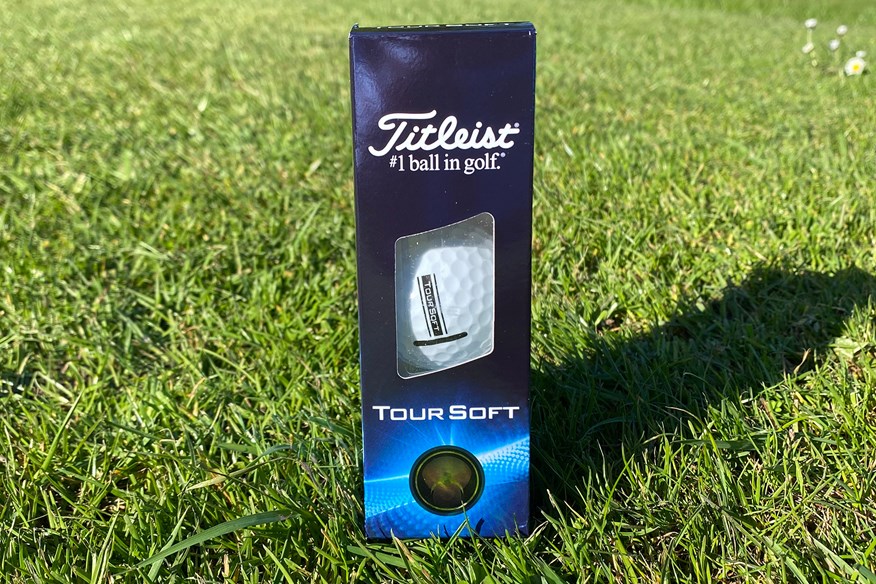
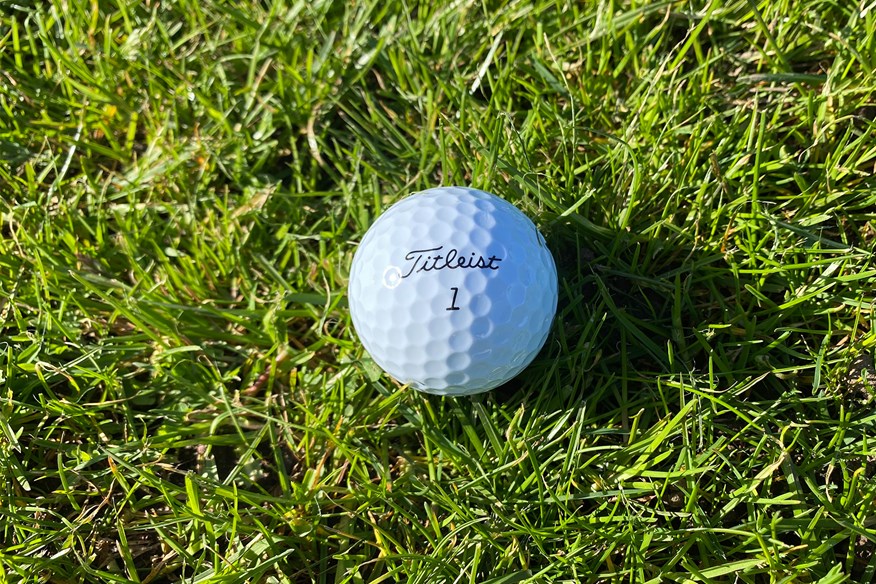
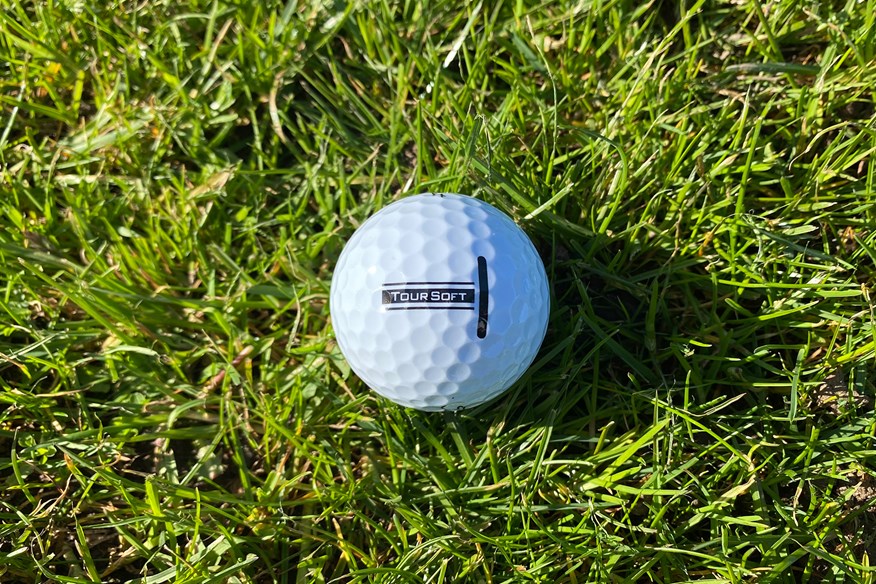
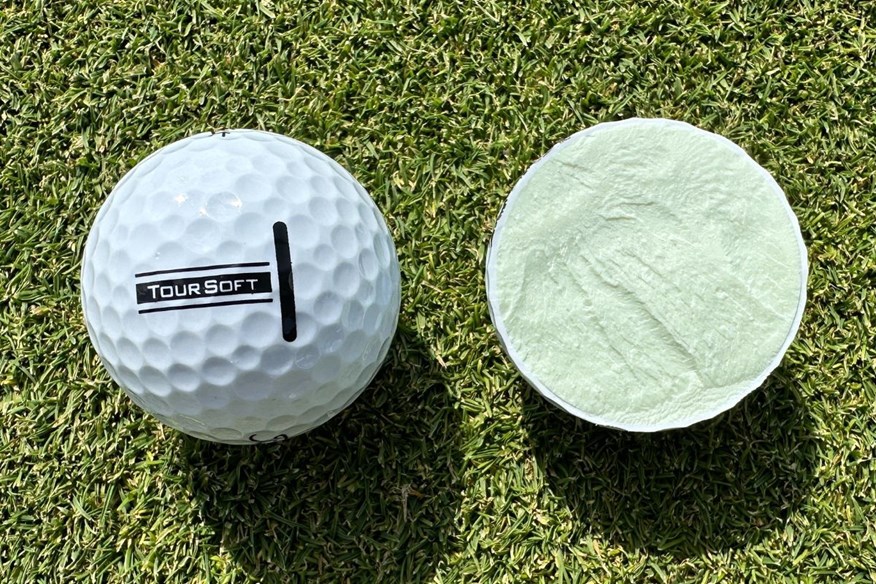
Moving to approach play, this golf ball is the bronze medal winner in this area. Tour Soft produces the second-highest spin (4,774rpm) and second-steepest descent angle (45.2), but it is the shortest two-piece golf ball (154.2yds).
Off-the-tee performance has this golf ball very closely matched with Titleist's distance two-piece golf ball - Velocity. Granted, Tour Soft is slightly shorter and slower at all three swing speeds. However, giving up less than a yard off the tee at every swing speed is probably worth it for the approach play and short game performance gains. It performed well enough at 114mph to earn the silver medal for tee to green performance.
Tour Soft is a super consistent golf ball in every area. If you're looking for a two-piece golf ball that'll do everything, this golf ball needs to be on your mind.
On-course verdict
This is one of the best-feeling golf balls I've had the pleasure of playing with purely because of how soft it is. I'm not always a fan of soft golf balls, but when they feel as good as the Tour Soft does, there's nothing to dislike.
The feedback and response throughout the bag is exactly what you want with a soft golf ball, but it's most enjoyable when playing around the greens because you can really feel the ball interacting with the grooves.
Around the greens, this ball generates amazing spin and control that's capable of challenging the best high-spin golf balls.
Moving away from the green, I didn't notice anything special about the Tour Soft's performance, but in the same breath, there's nothing to criticize. If anything, this ball performs better than you would expect from a two-piece model.
The Titleist Tour Soft is great value, and if you want a soft-feeling golf ball, this is the model you want.
Pros
- Amazing short-game spin and control
- Incredibly soft and responsive
- Great value
Cons
- Short distance in iron play
| Carry distance (yds) | Driver 114mph - 271.3 | Driver 93mph - 208.5 | Driver 78mph - 160.4 | 7-iron - 154.2 |
| Ball speed (mph) | Driver 114mph - 163.3 | Driver 93mph - 133.4 | Driver 78mph - 112.8 | 7-iron - 108.3 |
| Backspin (rpm) | Driver 114mph - 2,776 | Driver 93mph - 2,731 | Driver 78mph - 2,438 | 7-iron - 4,774 | Pitch - 6,075 |
| Launch angle (°) | Driver 114mph - 11.1 | Driver 93mph - 13 | Driver 78mph - 14 | 7-iron - 21.1 | Pitch - 30.4 |
| Descent angle (°) | Driver 114mph - 37.6 | Driver 93mph - 32.8 | Driver 78mph - 27.3 | 7-iron - 45.2 | Pitch - 35.7 |
| Peak height (yds) | Driver 114mph - 32.6 | Driver 93mph - 22.8 | Driver 78mph - 15.4 | 7-iron - 29.5 | Pitch - 6.8 |
| Compression (psi) | 95 |
- Large, faster core
- Reformulated thin fusablend cover
- Proprietary quadrilateral dipyramid dimple design
- 346 dimples
- 2-Piece construction
- Available in white, green, and yellow
- An alternative model is AIM 360
No.1 3-piece club golfer model
This is one of my most highly anticipated golf balls of the entire test. Ever since I tested the Vice Tour on-course, I've been waiting to see how it would perform in our robot test. I'm very pleasantly surprised.
I'm a fan of the Tour, but I never expected this golf ball would scoop up five awards in the three-piece club golfer category. As well as being the best golf ball for tee to green performance at 114mph, the Tour won the silver medal for tee to green performance at 93mph, off-the-tee performance, and short game performance, plus the bronze medal for tee to green performance at 78mph.
This golf ball is the real deal - and it doesn't have a urethane cover. That's quite possibly a reason as to why it's low-spinning when approaching greens (4,216rpm). However, around the greens, that spin shoots up, and it's the second-highest-spinning model with 5,967rpm (14th overall).
Short game and approach play performance is very clearly solid, but off the tee is where the Tour really gets you excited. At 114mph, this is the longest (271.4yds) and second-fastest (163.3mph) golf ball, at 93mph, it's the longest (208.3yds) and third-fastest (133.4mph), and at 78mph, it's the second-longest (160.8yds) and second-fastest (113.2mph).
There's a ton to like about the Vice Tour, and factoring in the price, as well as its domination, this is the best three-piece club golfer model.
On-course verdict
I would say the Vice Tour is a suitable option for a wide range of golfers because, as a whole, it’s a decent, well-rounded golf ball.
One area where the Vice Tour impresses me is with how well it propels off the face of a long iron. Distance is strong even into the wind, and there’s a more pleasant feedback from this ball than I feel from any of the golf balls in Vice’s Pro range.
I wouldn’t go as far as to say the Vice Tour is a soft-feeling golf ball or a firm-feeling golf ball. I would place it somewhere in the middle, with a medium feel.
Having played with Vice’s Pro Plus, Pro, and Pro Air golf balls, I would say that this golf ball is more responsive than all of those. The feel off the face isn’t as profound as other golf balls I’ve played with, but it definitely isn’t as muted as other Vice golf balls.
This helps to provide more feedback from your shot, which is something I like, but it isn’t something that every golfer wants. The responsiveness of the Vice Tour could be better, but for a golf ball with a Surlyn cover, it’s pretty good.
Whether you have a fast swing speed or a slow swing speed, the Vice Tour should definitely be on your radar.
Read our full Vice Tour golf ball review.
Pros
- Consistent and tight dispersion
- Impressive on-course distance
- Incredible value for money
Cons
- Not much grab on short approach shots
| Carry distance (yds) | Driver 114mph - 271.4 | Driver 93mph - 208.3 | Driver 78mph - 160.8 | 7-iron - 158.1 |
| Ball speed (mph) | Driver 114mph - 163.3 | Driver 93mph - 133.4 | Driver 78mph - 113 | 7-iron - 108.7 |
| Backspin (rpm) | Driver 114mph - 2,769 | Driver 93mph - 2,635 | Driver 78mph - 2,381 | 7-iron - 4,216 | Pitch - 5,967 |
| Launch angle (°) | Driver 114mph - 11.1 | Driver 93mph - 13 | Driver 78mph - 14 | 7-iron - 21.5 | Pitch - 30.6 |
| Descent angle (°) | Driver 114mph - 37.7 | Driver 93mph - 32.2 | Driver 78mph - 27.3 | 7-iron - 44.6 | Pitch - 35.8 |
| Peak height (yds) | Driver 114mph - 32.6 | Driver 93mph - 22.4 | Driver 78mph - 15.5 | 7-iron - 29.6 | Pitch - 6.7 |
| Compression (psi) | 112 |
- Enhanced mid-acid Surlyn cover
- High resilience and low stiffness composition
- Size-optimized High Energy Speed Core (HESC)
- 312 dimples
- 3-Piece construction
- Available in white and grey
Gold medal for short game performance
Kirkland golf balls are known for being high-spinning. The V2.0 was, and so is the V3.0. That's not an issue if you struggle to get the ball in the air or find it difficult to hit and hold greens. It also means the Signature V3.0 is amazing around the greens.
The Signature V3.0 is the gold medal winner for short game performance, in this category, generating 6,050rpm. Of all 62 golf balls tested, it's the seventh-highest-spinning golf ball.
Spin persists throughout the bag, and with the 7-iron shot, the Signature V3.0 is once again the highest-spinning three-piece club golfer model (4,861rpm). It also lands with the steepest descent angle (45°).
You might think the high-spinning nature will hurt how the V3.0 performs off the tee, but is that the case? Definitely not. The V3.0 is the bronze medal winner for off-the-tee performance.
It does generate a lot of spin, but it's also long and fast at all three swing speeds. At the fastest swing speed, it's the third-longest (271yds) and fastest (163.5mph), at the moderate swing speed, it's the third-longest (208yds) and fastest (133.6mph), and at the slower swing speed, it's the third-longest and fourth-fastest (112.8mph).
With the Kirkland Signature V3.0, you are signing yourself up to play with a high-spin golf ball, but if you need spin, it's one of the best models you can play with.
On-course verdict
Over the years, these golf balls have been highly regarded by many golfers and heavily scrutinized by others. Kirkland’s Signature three-piece golf balls are known for delivering high spin, and this is no different with their V3.0, as it ranks among the best high-spin golf balls.
The biggest issue the V3.0 has is that its spin compromises distance, but for some golfers, that won’t be an issue whatsoever.
When I took this ball out on the course, I couldn’t criticize its distance in the long game, but then again, high-spin golf balls suit my game.
I’m a big believer that for the majority of golfers, spin is your friend. You’re guaranteed a golf ball that easily generates spin by playing with the V3.0. Therefore, I believe that more golfers would benefit from playing with this golf ball than not playing with this golf ball.
I’m not normally a fan of soft-feeling golf balls, but I must say that the V3.0 feels good off the club face. I wouldn’t say that the response from this golf ball is particularly strong throughout the bag, but around the greens, there is a pleasant sensation when you clip the ball cleanly – something I think most golfers appreciate.
I think the Kirkland Signature V3.0 is a very strong golf ball. I would never expect to see it played on Tour, but for amateur golfers, it’s definitely one to consider. If you struggle to generate spin or if you just enjoy having a high-spinning golf ball, then it’s a fantastic option.
Read our full Kirkland Signature V3.0 golf ball review.
Pros
- Amazing price per ball considering the quality
- Combines soft feel, long distance, and high spin
- Impressive consistent ball flight
Cons
- Don't expect optimal carry distance
| Carry distance (yds) | Driver 114mph - 271 | Driver 93mph - 208 | Driver 78mph - 160.5 | 7-iron - 154.3 |
| Ball speed (mph) | Driver 114mph - 163.5 | Driver 93mph - 133.6 | Driver 78mph - 112.8 | 7-iron - 108.6 |
| Backspin (rpm) | Driver 114mph - 2,873 | Driver 93mph - 2,734 | Driver 78mph - 2,572 | 7-iron - 4,861 | Pitch - 6,050 |
| Launch angle (°) | Driver 114mph - 11.1 | Driver 93mph - 12.7 | Driver 78mph - 13.9 | 7-iron - 20.7 | Pitch - 30 |
| Descent angle (°) | Driver 114mph - 38.3 | Driver 93mph - 32.3 | Driver 78mph - 27.7 | 7-iron - 45 | Pitch - 35.1 |
| Peak height (yds) | Driver 114mph - 33.2 | Driver 93mph - 22.3 | Driver 78mph - 15.6 | 7-iron - 29.1 | Pitch - 6.5 |
| Compression (psi) | 107 |
- Increased core size
- Mantle with new proprietary cover
- Proprietary TPU with improved scuff resistance and impact endurance
- Modified dimple depth for optimized flight height
- 338 dimples
- 3-Piece construction
- Available in white only
Bronze medal for short game performance
Probably not. However, it is the bronze medal winner for short game performance (5,960rpm). Although the dimple technology isn't specifically designed to generate spin, the RB 566 is the highest-spinning golf ball in approach play (4,947), and it lands with the steepest descent angle (45.3°).
Off the tee is where the RB 566 should make the most impact by reducing spin. It's below the test average for backspin at 93mph and 78mph, and bang on the average at 114mph. This makes it a very average performer for off-the-tee performance.
It might not be what Mizuno are going for, but I'd recommend the RB 566 for anyone looking for a high-spin golf ball. It's definitely a unique golf ball, and for that reason, it is interesting. However, the RB 566 should only tempt you if you're looking to add spin to your game.
On-course verdict
There's something very exciting about a unique golf ball, and so that's exactly how I felt when testing the Mizuno RB 566 with its 566 dimples.
I didn't really know what to expect from this golf ball, but I definitely wasn't expecting it to confuse me as much as it did. I had a lot of enjoyment playing with the RB 566 because I was able to throw the ball at the pin and watch it stop. I wasn't expecting it to spin as much as it did.
This golf ball was high-spinning for me throughout the bag. Off the tee, I was struggling to stop the ball from spinning. I definitely had contrasting emotions off the tee to approaching the green.
The feel is soft, and it's not the most responsive, which I'm not massively keen on.
Overall, I feel as though this is a high-spinning golf ball, almost to its detriment because it balloons off the tee. However, a different golfer might think otherwise, especially if you have a slower swing speed.
Pros
- Great short-game spin and control
- Good value
- Solid performance from tee to green
Cons
- Struggled to reduce spin off the tee on the course
| Carry distance (yds) | Driver 114mph - 268.6 | Driver 93mph - 207.9 | Driver 78mph - 160.2 | 7-iron - 154.8 |
| Ball speed (mph) | Driver 114mph - 161.9 | Driver 93mph - 133.3 | Driver 78mph - 112.6 | 7-iron - 109.1 |
| Backspin (rpm) | Driver 114mph - 2,719 | Driver 93mph - 2,553 | Driver 78mph - 2,381 | 7-iron - 4,947 | Pitch - 5,960 |
| Launch angle (°) | Driver 114mph - 11.1 | Driver 93mph - 13 | Driver 78mph - 14.1 | 7-iron - 20.7 | Pitch - 30.6 |
| Descent angle (°) | Driver 114mph - 36.9 | Driver 93mph - 31.6 | Driver 78mph - 27.2 | 7-iron - 45.3 | Pitch - 36 |
| Peak height (yds) | Driver 114mph - 31.5 | Driver 93mph - 21.9 | Driver 78mph - 15.4 | 7-iron - 29.6 | Pitch - 7 |
| Compression (psi) | 92 |
- Large soft compression core
- Micro dimple design
- Ionomer cover
- 566 dimples
- 2-Piece construction
- Available in white, yellow, and orange
Best value golf balls 2025: Robot test data
| Golf ball | Bridgestone e12 Speed | Seed SD-02 | Vice Pro Plus | Maxfli Tour X | PXG Xtreme Tour X | Callaway Warbird Distance+ | Titleist Tour Soft | Vice Tour | Kirkland Signature V3.0 | Mizuno RB 566 |
| Compression | 103 | 104.0 | 116.0 | 117.0 | 112 | 92 | 95 | 112.0 | 107.0 | 92 |
| 114mph Driver Ball Speed (mph) | 164 | 163.8 | 163.8 | 164.0 | 164.0 | 163 | 163.3 | 163.3 | 163.5 | 161.9 |
| 114mph Driver Launch Angle (°) | 11.4 | 11.0 | 10.9 | 11.0 | 11.2 | 11.1 | 11.1 | 11.1 | 11.1 | 11.1 |
| 114mph Driver Backspin (rpm) | 2680 | 2688 | 2780 | 2828 | 2829 | 2683 | 2776 | 2769 | 2873 | 2719 |
| 114mph Driver Carry Distance (yds) | 273.9 | 272.8 | 271.9 | 272.3 | 272.8 | 270.9 | 271.3 | 271.4 | 271.0 | 268.6 |
| 114mph Driver Height (yds) | 33 | 32.1 | 32.2 | 33.1 | 33.6 | 31.7 | 32.6 | 32.6 | 33.2 | 31.5 |
| 114mph Driver Descent Angle (°) | 37.6 | 37.0 | 37.4 | 38.1 | 38.4 | 36.8 | 37.6 | 37.7 | 38.3 | 36.9 |
| 93mph Driver Ball Speed (mph) | 134.1 | 134.2 | 133.7 | 134.4 | 134.1 | 133.7 | 133.4 | 133.4 | 133.6 | 133.3 |
| 93mph Driver Launch Angle (°) | 12.9 | 12.8 | 12.7 | 12.7 | 12.7 | 13 | 13 | 13.0 | 12.7 | 13 |
| 93mph Driver Backspin (rpm) | 2574 | 2718 | 2848 | 2860 | 2688 | 2611 | 2731 | 2635 | 2734 | 2553 |
| 93mph Driver Carry Distance (yds) | 209.7 | 209.7 | 208.2 | 209.8 | 209.4 | 209.2 | 208.5 | 208.3 | 208.0 | 207.9 |
| 93mph Driver Height (yds) | 22.3 | 22.7 | 22.8 | 23.1 | 22.4 | 22.5 | 22.8 | 22.4 | 22.3 | 21.9 |
| 93mph Driver Descent Angle (°) | 31.8 | 32.5 | 33.0 | 33.2 | 32.2 | 32.2 | 32.8 | 32.2 | 32.3 | 31.6 |
| 78mph Driver Ball Speed (mph) | 113.2 | 113.4 | 112.9 | 113.2 | 113.0 | 113 | 112.8 | 113.0 | 112.8 | 112.6 |
| 78mph Driver Launch Angle (°) | 14.1 | 14.0 | 13.7 | 13.7 | 14.0 | 14.2 | 14 | 14.0 | 13.9 | 14.1 |
| 78mph Driver Backspin (rpm) | 2317 | 2484 | 2643 | 2701 | 2458 | 2346 | 2438 | 2381 | 2572 | 2381 |
| 78mph Driver Carry Distance (yds) | 161.3 | 162.4 | 160.5 | 161.2 | 160.8 | 161.3 | 160.4 | 160.8 | 160.5 | 160.2 |
| 78mph Driver Height (yds) | 15.5 | 15.9 | 15.6 | 15.7 | 15.5 | 15.6 | 15.4 | 15.4 | 15.6 | 15.4 |
| 78mph Driver Descent Angle (°) | 27 | 27.8 | 27.8 | 28.1 | 27.4 | 27.3 | 27.3 | 27.1 | 27.7 | 27.2 |
| 7-Iron Ball Speed (mph) | 109.2 | 109.5 | 108.9 | 109.1 | 108.7 | 108.7 | 108.3 | 108.7 | 108.6 | 109.1 |
| 7-Iron Launch Angle (°) | 21.3 | 21.3 | 20.8 | 20.9 | 20.9 | 21.6 | 21.1 | 21.5 | 20.7 | 20.7 |
| 7-Iron Backspin (rpm) | 4467 | 4397 | 4807 | 4694 | 4820 | 4273 | 4774 | 4216 | 4861 | 4947 |
| 7-Iron Carry Distance (yds) | 157.6 | 158.7 | 155.2 | 156.2 | 154.7 | 157.9 | 154.2 | 158.1 | 154.3 | 154.8 |
| 7-Iron Height (yds) | 30 | 30.0 | 29.4 | 29.6 | 29.5 | 29.9 | 29.5 | 29.6 | 29.1 | 29.6 |
| 7-Iron Descent Angle (°) | 45.1 | 45.0 | 45.1 | 45.1 | 45.2 | 44.9 | 45.2 | 44.6 | 45.0 | 45.3 |
| 40-Yard Pitch Ball Speed (mph) | 46.4 | 46.6 | 46.1 | 46.3 | 46.0 | 46.7 | 46.6 | 46.1 | 46.2 | 46.8 |
| 40-Yard Pitch Launch Angle (°) | 30.7 | 30.9 | 30.3 | 30.5 | 30.2 | 30.7 | 30.4 | 30.6 | 30.0 | 30.6 |
| 40-Yard Pitch Backspin (rpm) | 5951 | 5845 | 6090 | 6028 | 5961 | 5963 | 6075 | 5967 | 6050 | 5960 |
| 40-Yard Pitch Carry Distance (yds) | 39.8 | 40.3 | 39.2 | 39.6 | 39.0 | 40.3 | 40 | 39.3 | 39.2 | 40.5 |
| 40-Yard Pitch Height (yds) | 6.9 | 7.0 | 6.6 | 6.7 | 6.6 | 6.9 | 6.8 | 6.7 | 6.5 | 7 |
| 40-Yard Pitch Descent Angle (°) | 36 | 36.4 | 35.4 | 35.7 | 35.3 | 36.1 | 35.7 | 35.8 | 35.1 | 36 |
Best value golf balls 2025: Buying guide
Value can be found in every category of golf balls. That might be hard to believe if you play with the best premium golf balls, but it’s true! No matter what type of golf balls you lean towards, chances are there is always an option that provides better value for money. When looking for value, there are a few things to consider.
Ability
Regardless of your ability, you will benefit from playing with one of the best premium golf balls because of the technology packed within. Finding value within premium golf balls is possible. The Seed SD-02, Vice Pro Plus, and Maxfli Tour X are all premium four-piece golf balls.
Better and more seasoned golfers arguably should be playing with the best balls they can afford to be playing with because it will 100 percent improve your game from tee to green. The flip side to that is, if you’re new to the game or play infrequently with your buddies, work colleagues, or whoever, then you might not have the game to warrant playing with premium golf balls for whatever reason. At that point, playing with cheap golf balls is perfectly understandable.
That being said, switching to one of the best value golf balls could help you play better golf and find more enjoyment – even if you do just play for fun.
Budget
Tied closely with ability is budget. Players who are new to the game or don’t get out often are more likely to budget when it comes to purchasing golf balls. Whereas more frequent and skilled golfers are less likely to budget and opt for more expensive golf balls. That’s not to say every golfer meeting one of those credentials behaves this way.
While I’ve probably been alive less number of years than some of you have played golf, I’ve had the pleasure of working in the golf industry for the entirety of my working life. During that time, I’ve seen golfers of all abilities splashing the cash on the latest golf clubs in the hope of improving their game and being thrifty when it comes to spending on golf balls – I’ve been a culprit of this myself in my early golfing days!
It’s worth considering whether your money is better spent on premium golf balls to improve your game – I would say it is. Also, if you’re staring down the golf balls and locked in on a dozen Top-Flites at $20, before heading to the till, take a look around and see if stretching your budget even by $5 or $10 will enable you to pick a higher quality golf ball and assist you in scoring lower.
If there’s ever a piece of golf equipment you shouldn’t be frugal with, it’s golf balls!
Feel
The vast majority of golfers look for soft-feeling golf balls, but they’re not as common in this category as they are in others. That being said, even golf balls labelled as being firm, such as the Wilson Staff Model X, is still soft compared to the rocks that used to exist. Many golfers enjoy soft-feeling golf balls because they deliver a sweet sensation off of every club in the bag – except if you skull one.
I enjoy playing with firmer golf balls like the Wilson Staff Model X and Titleist Pro V1x because I feel as though they provide more feedback and a stronger response. However, feel is completely personal, and like I say, it’s tough to find a super-firm golf ball because most are made to be soft to please the needs of more golfers.
Performance
Given that value is available in every category of golf balls, understanding what performance you need from a golf ball is incredibly important.
Every golf ball comes fitted with specific technology in order to perform in a particular manner – this is often outlined on the box. For instance, it might inform you that a certain golf ball is designed to travel high and far off the tee with low spin but grab and spin on the greens. Another golf ball might say it produces low flight off the tee and mid-spin in the short game.
You should always take this information with a pinch of salt. No manufacturer will ever put on the box that their ball doesn’t travel far off the tee and doesn’t spin on the greens, so you need to decipher the jargon to figure out which balls will do what they say, and which balls won’t.
Thankfully, we’ve carried out a mammoth robot test to help you see how well a ball stacks up to the claims made by the manufacturer.
Premium golf balls, along with golf balls for mid-handicappers, deliver long game distance with low spin and high short-game spin and control. Distance golf balls and many of the best golf balls for beginners and high-handicappers perform extremely well off the tee with good distance and low spin; however, iron spin and wedge spin lowers, and it becomes more difficult to hit and hold greens.
Spin
Ideally, every golf ball would produce low-spin off the tee and high-spin in your approach game. However, not all golf balls are designed that way. The majority of golf balls are designed to produce low driver spin and generate distance off the tee, but not all golf balls are manufactured to generate high spin from irons and wedges.
Price generally correlates with short-game spin. Budget golf balls will generate less short-game spin than expensive golf balls, but there might not be much difference in your long-game spin. During a ball fitting at Titleist, I discovered that a Titleist Pro V1x and Titleist Velocity performed very similarly with my driver, but with a 7-iron, the spin dropped slightly with the Velocity, and then with a 60° wedge, the spin fell massively with the Velocity.
Spin in the golf ball comes from the combination of layers within the golf ball reacting with one another, hence why more expensive golf balls spin more in approach play because they consist of more layers and the technology is more refined. Cheaper golf balls tend to consist of two layers: the cover and core. Therefore, they don’t have the number of layers required to produce astronomical spin when attacking pins.
Another factor that helps to enhance spin is the cover material. Golf balls with a urethane cover tend to spin more (but not always) because it’s a more flexible material compared to ionomer or surlyn, which doesn’t create as much friction with the clubface as urethane does. Once again, it’s more expensive golf balls that feature urethane covers to generate higher spin on approach shots.
Spin is massively important because it can either make you hit and hold a green or hit and fly over the green. The best golf balls for spin are by far premium golf balls, closely followed by golf balls for mid-handicappers, because they feature much of the technology found in Tour-standard golf balls. If you feel as though you need high levels of spin when attacking greens, have a look at the best high-spin golf balls. Alternatively, if you feel as though spin is hurting your game, check out the best low-spin golf balls.
Distance
I would honestly say that distance is the last factor to consider when purchasing golf balls. The best way to figure out which golf balls are best for you is by working your way back from the green to the tee box. The best way of doing this is with a launch monitor to see your numbers, but if you don’t have access to one, you can do it with your eye very easily.
Start by hitting wedge shots into the green and see which balls are performing best with spin, then work your way back to 7-iron distance and look for the same numbers with slightly more of an eye on carry distance. You should have whittled it down to one or two golf balls, hit them off the tee, and look at which performs the best.
If you do it this way, I guarantee a premium golf ball will always come out on top if you’re testing one. However, if you’re doing this with cheaper golf balls, you’ll still see differences between the golf balls, and you will find one that performs well for you, or you might have the luxury of deciding between a handful.
By testing golf balls this way, you’ll end up with the ball that performs best in the short game, which is where you score. Distance is important, but there are other ways of improving distance without sacrificing spin in a golf ball.
Cost against competitors
The best value golf balls differ substantially in price, this is because they are all from different categories of golf balls aimed at golfers of varying abilities. Depending on what golf balls you normally play with, there may be similar golf balls that are slightly cheaper, thus these golf balls offer better value than what you are currently using. Any comparisons made to balls from a different category are futile.
Construction
With value being achievable in every category of golf balls, and bearing in mind my previous remarks about comparisons made between golf balls in different categories, here’s a little crash course on golf ball construction.
The number of layers that make up the construction of a golf ball, and how those layers interact, will influence performance, spin, and distance. The makeup of a golf ball also coincides with budget; the cheapest golf balls sport a two-piece construction, and the most expensive are generally four or five-piece.
To give you a better understanding of the differences between the constructions, here is an overview of what to expect based on how many layers a golf ball has:
Two-piece balls: These are generally the most affordable, with a large core and durable ionomer/Surlyn cover – great for durability, distance, and value (especially if you lose balls). There are softer-feel and max-distance variants; our testing helps you weigh the trade-offs vs. premium urethane options.
Three-piece balls: These make up 47% of the models in this year’s test, and add a mantle to fine-tune launch, spin, and feel. Tour-level versions use urethane covers for wedge spin and greenside control; club-golfer versions often lower compression for feel/playability. Modern designs blur old distinctions – the Titleist Pro V1 is now lower-flying/spinning than some four-piece counterparts.
Four-piece & five-piece balls: These are no longer just “firmer X = low spin.” For instance, the latest Pro V1x (four-piece) can be higher-spinning/higher-flying than the three-piece Pro V1. TaylorMade remains the only major brand with five-piece balls – TP5 and TP5x – using three mantles to tune driver spin/launch and short-game spin. Typically, TP5x is faster, longer, and higher-launching; TP5 is softer with more wedge spin and shot-shaping versatility.
Color
The most common golf ball color is white; however, there are plenty of other colors and designs to choose from. More vibrant colors, such as yellow, orange, or green, are all easy to pick up, and they help some people with visibility – hence why they make for the best winter golf balls.
Other ways of adding color to the golf ball can be by design, whether it be a splash of color seen on Vice golf balls or an alignment design which also helps with visibility, such as TaylorMade’s Pix golf balls or Callaway’s Triple Track golf balls.
If you’ve only ever played with white golf balls, it might be worth trying a more colorful golf ball, especially if you’re always the one asking your playing partners, “Where did that one go?”.
Alignment
More and more golf balls are being released with enhanced alignment, and even standard golf balls have a more prominent alignment stamp now than they’ve ever had. The majority of brands now offer golf balls with enhanced alignment aids. The enhanced alignment aids can be extremely useful for putting and even lining up shots on the tee. Another plus of alignment golf balls is the alignment serves as a tool for finding your golf ball either in the air or among the trees.


